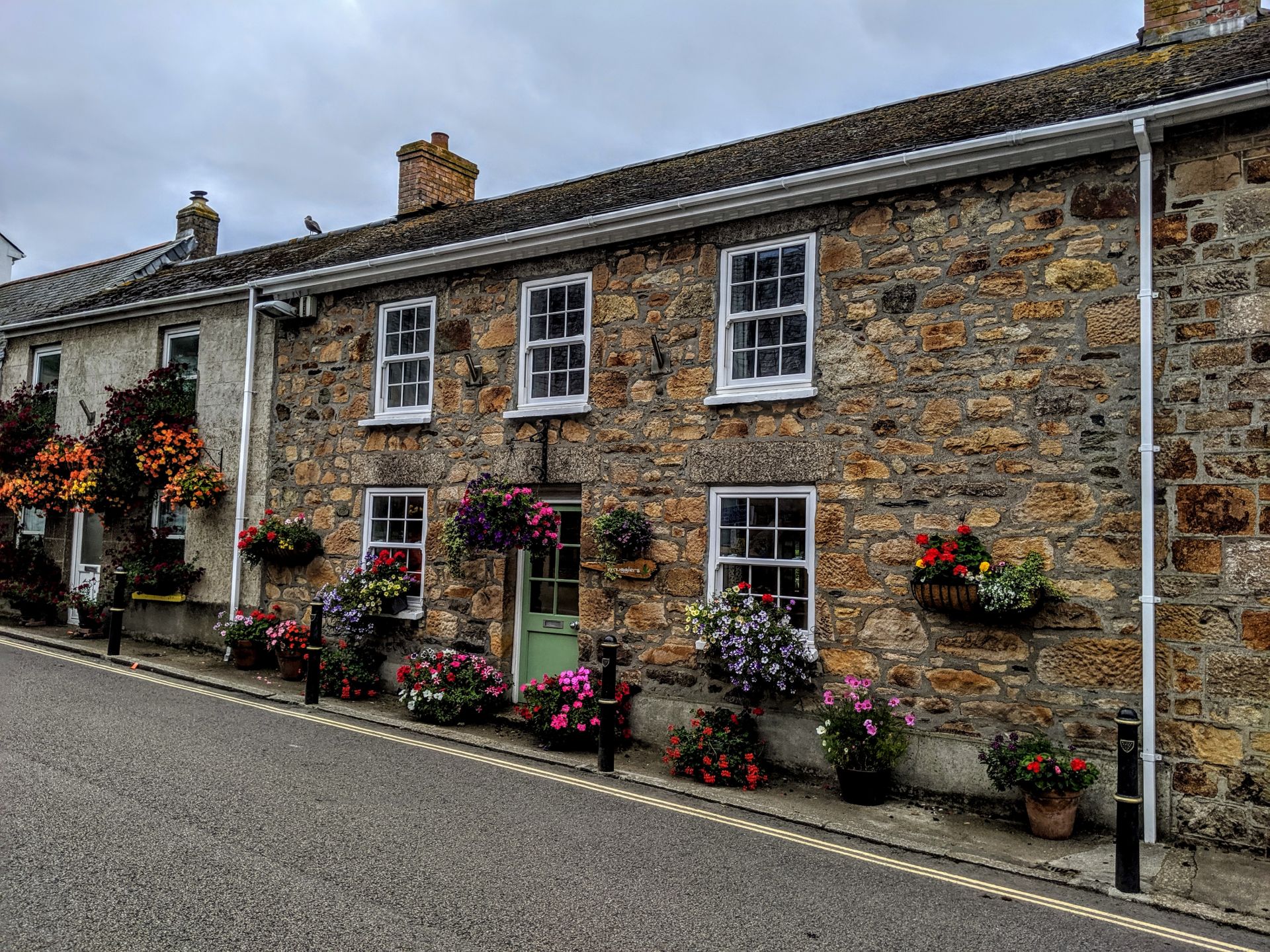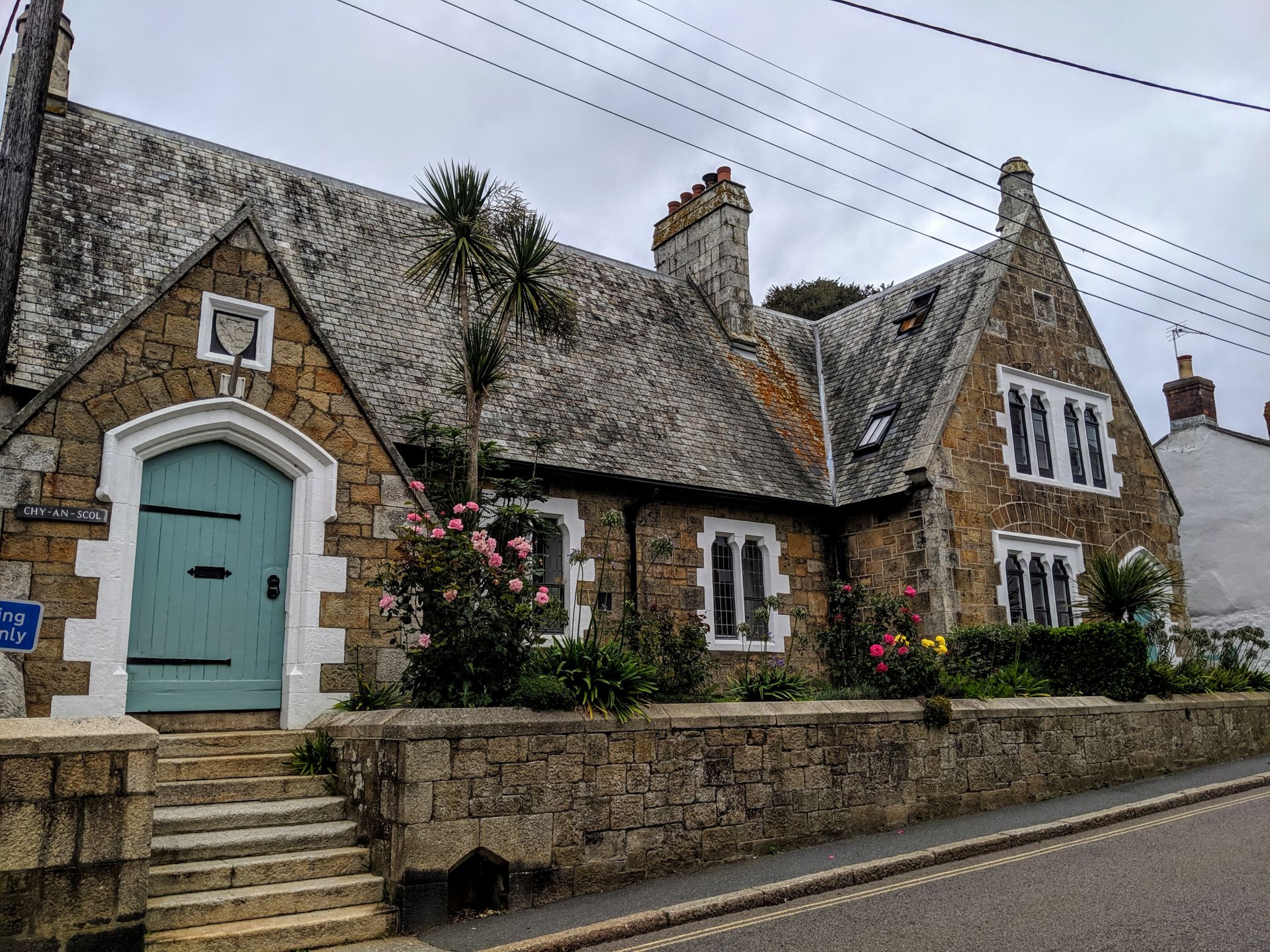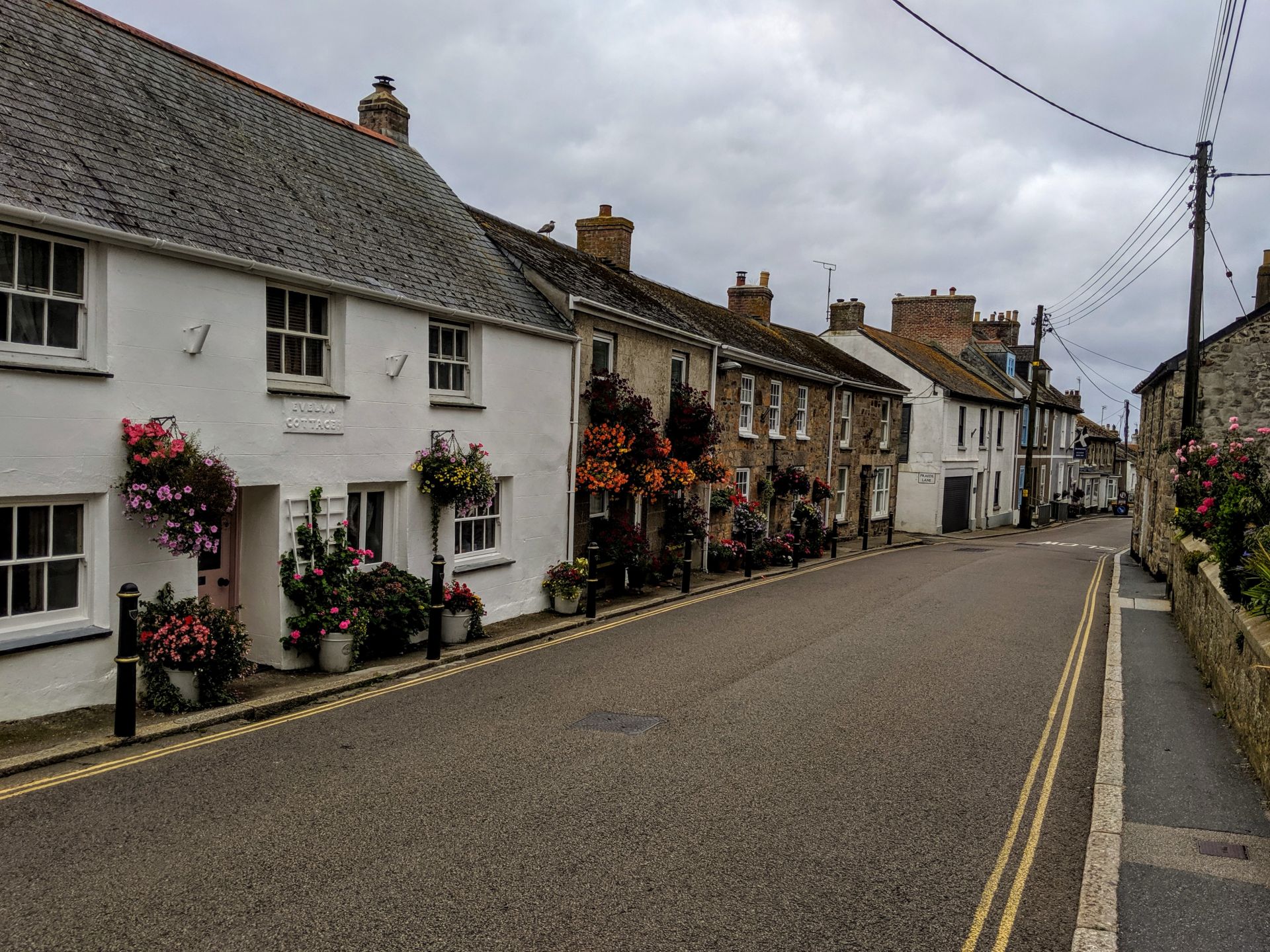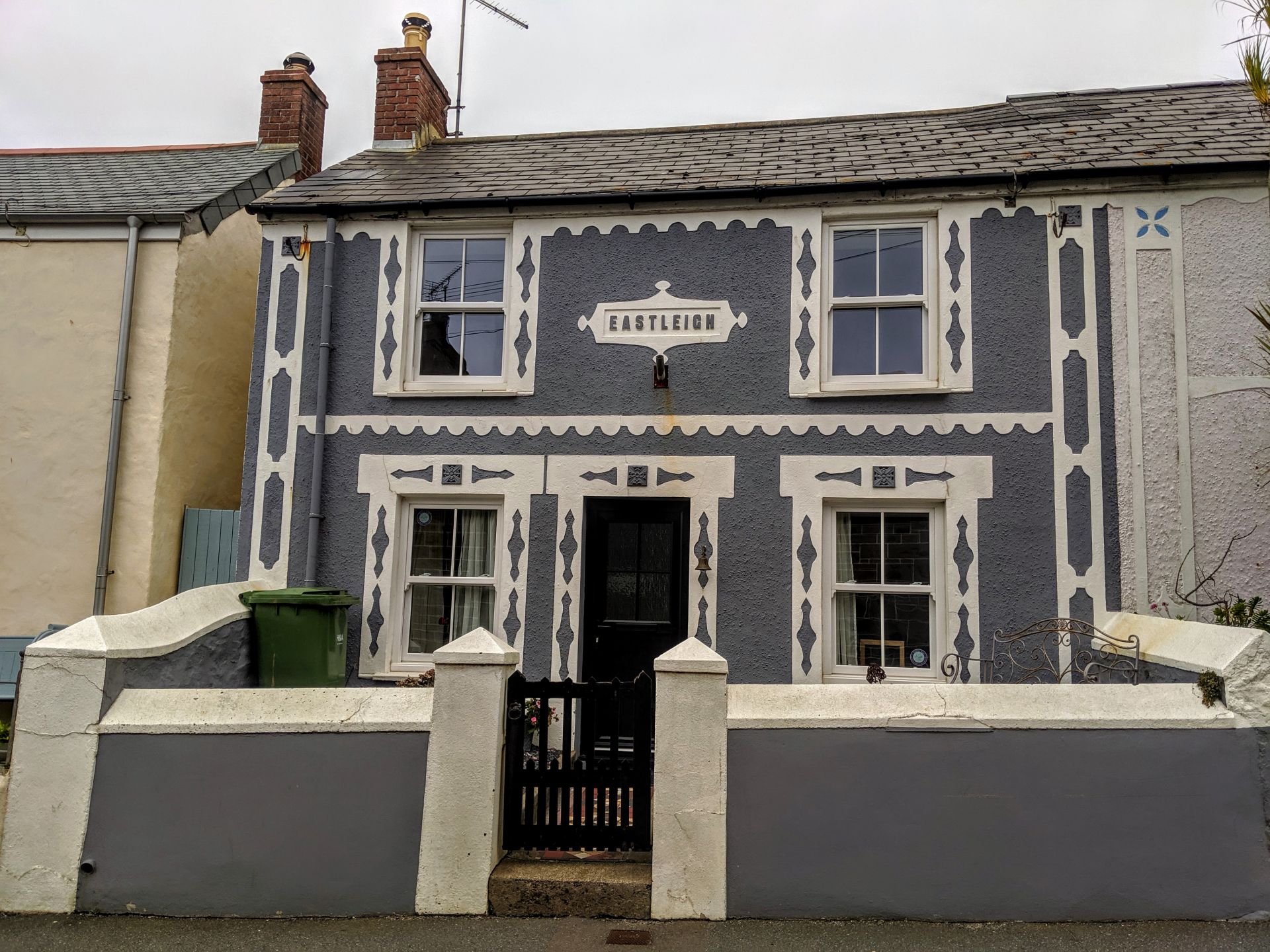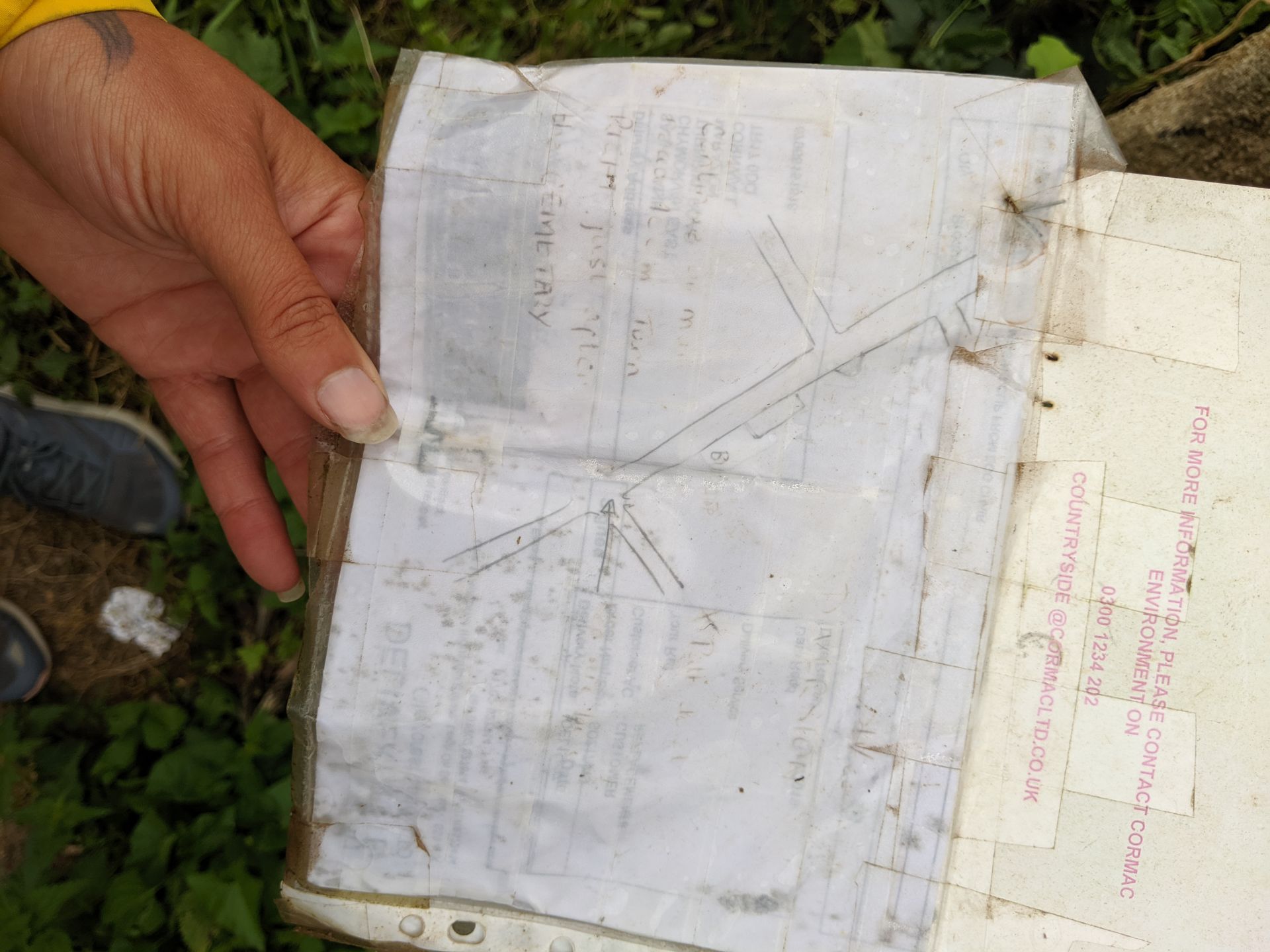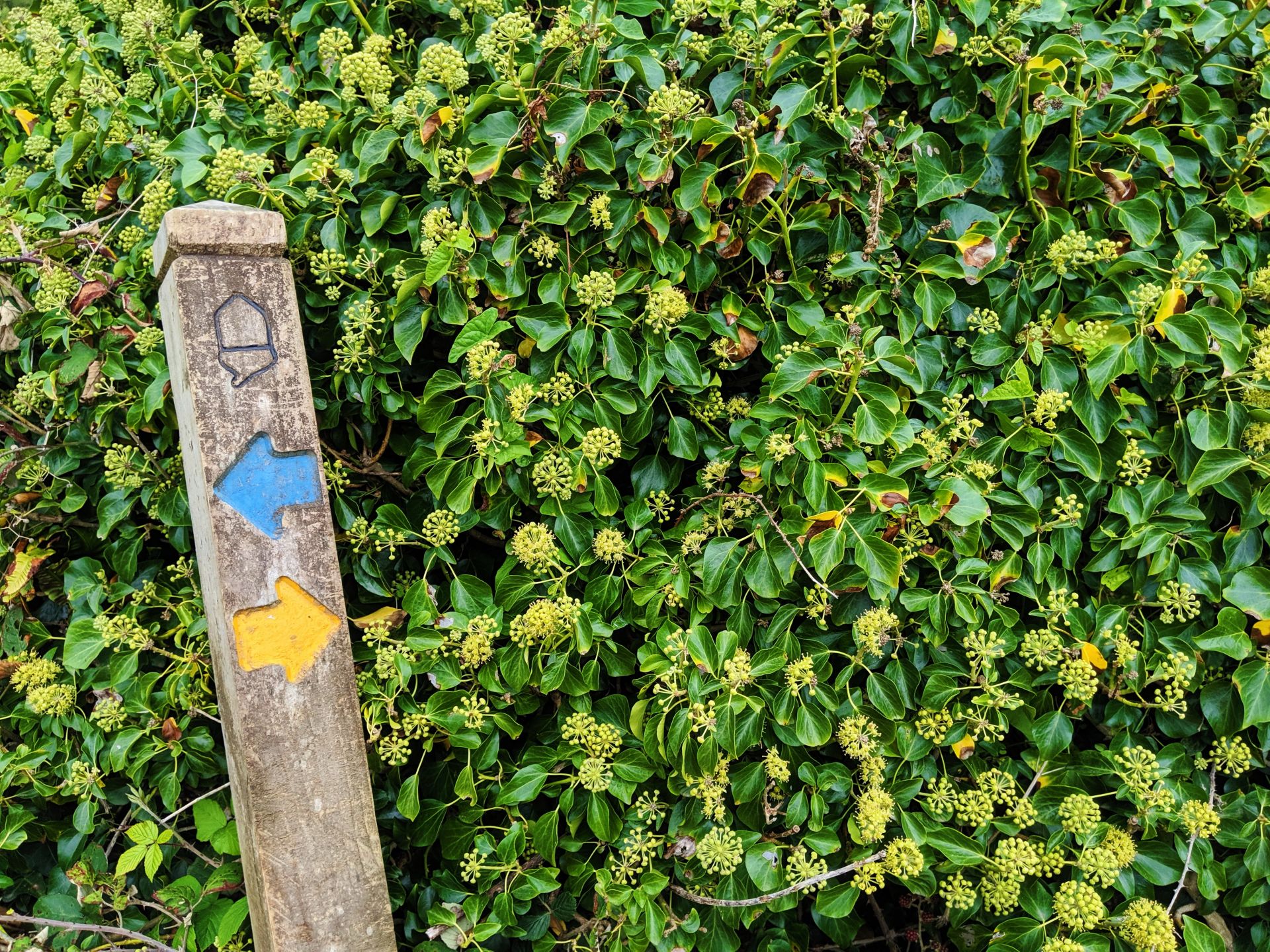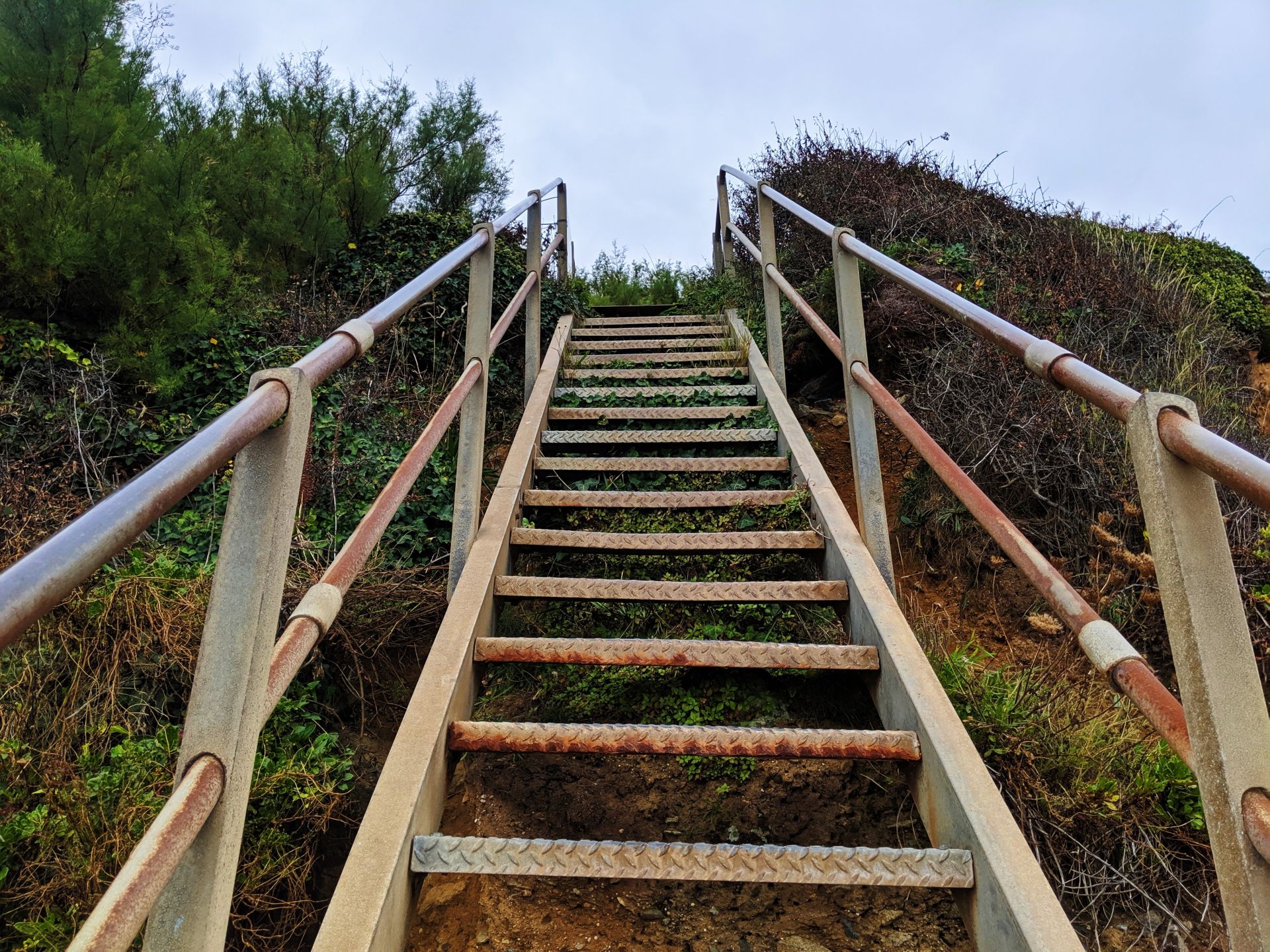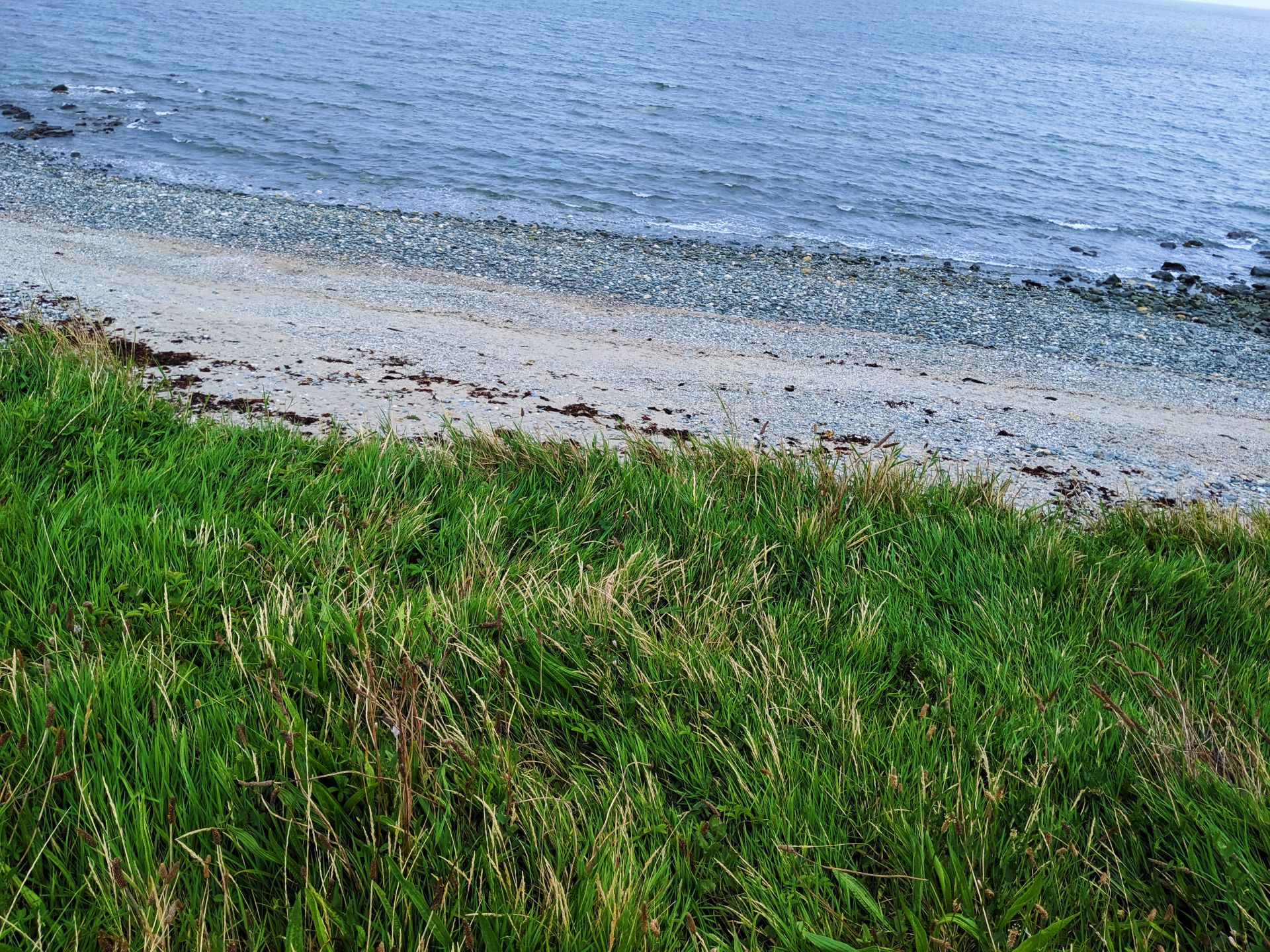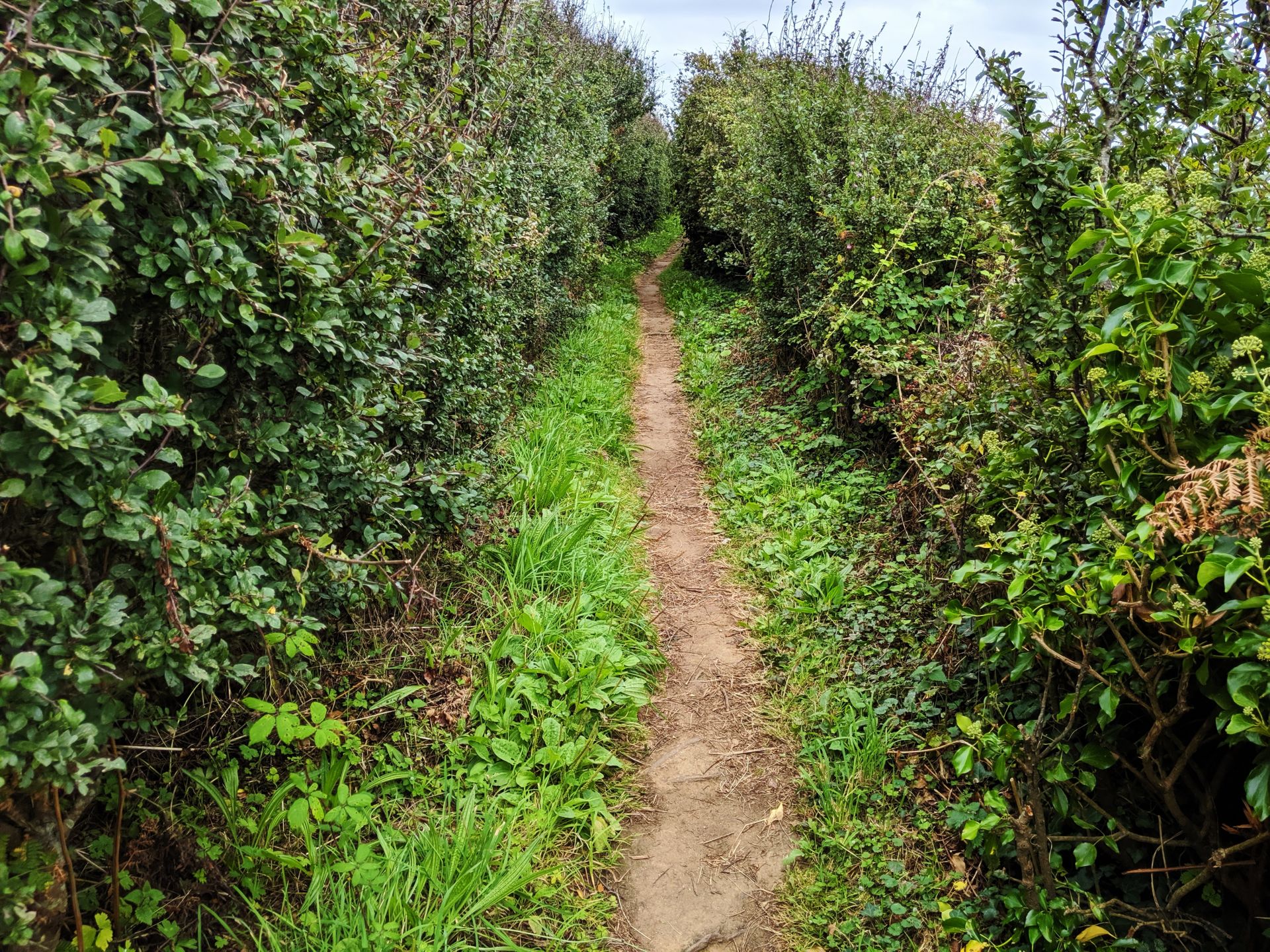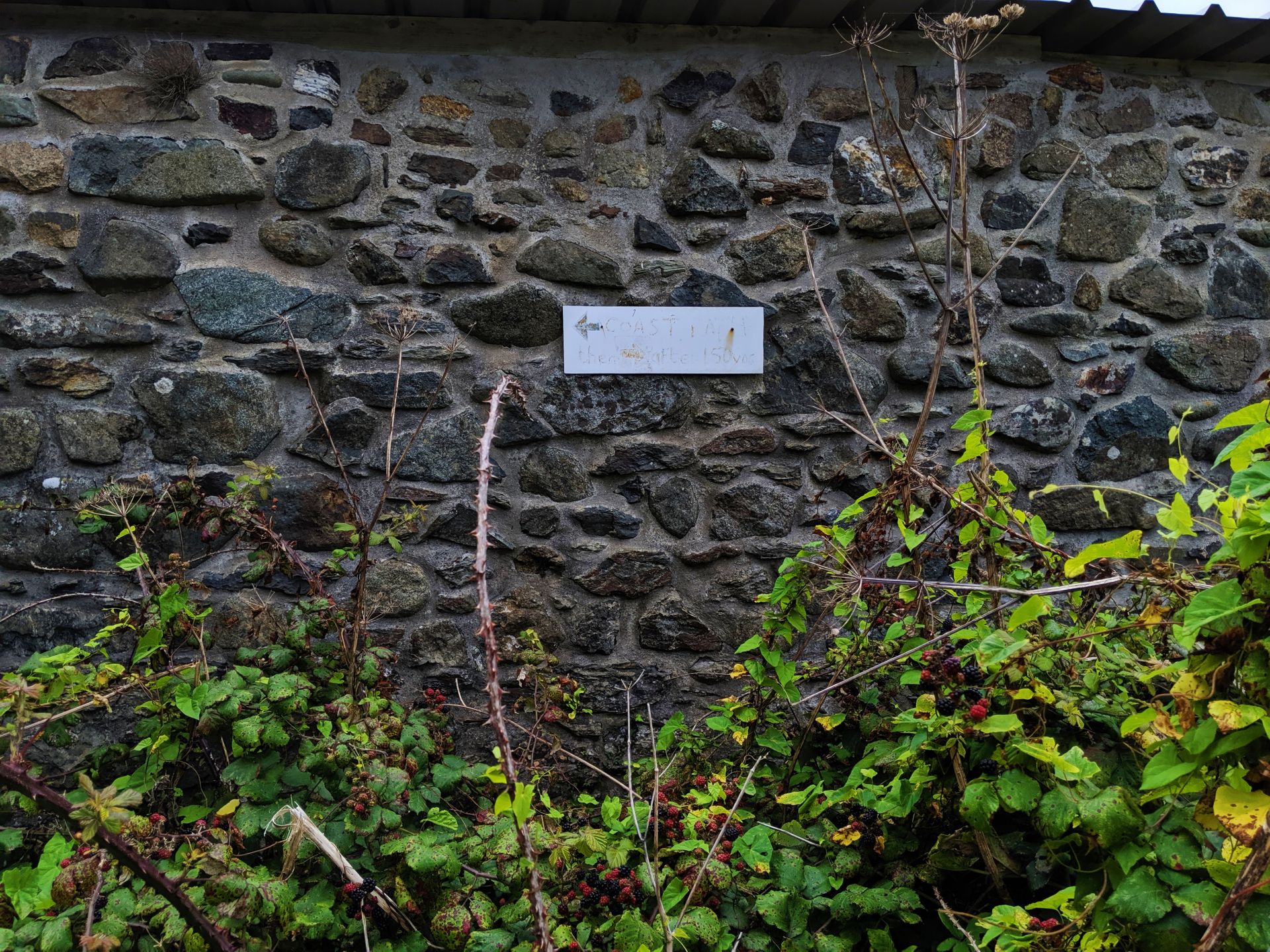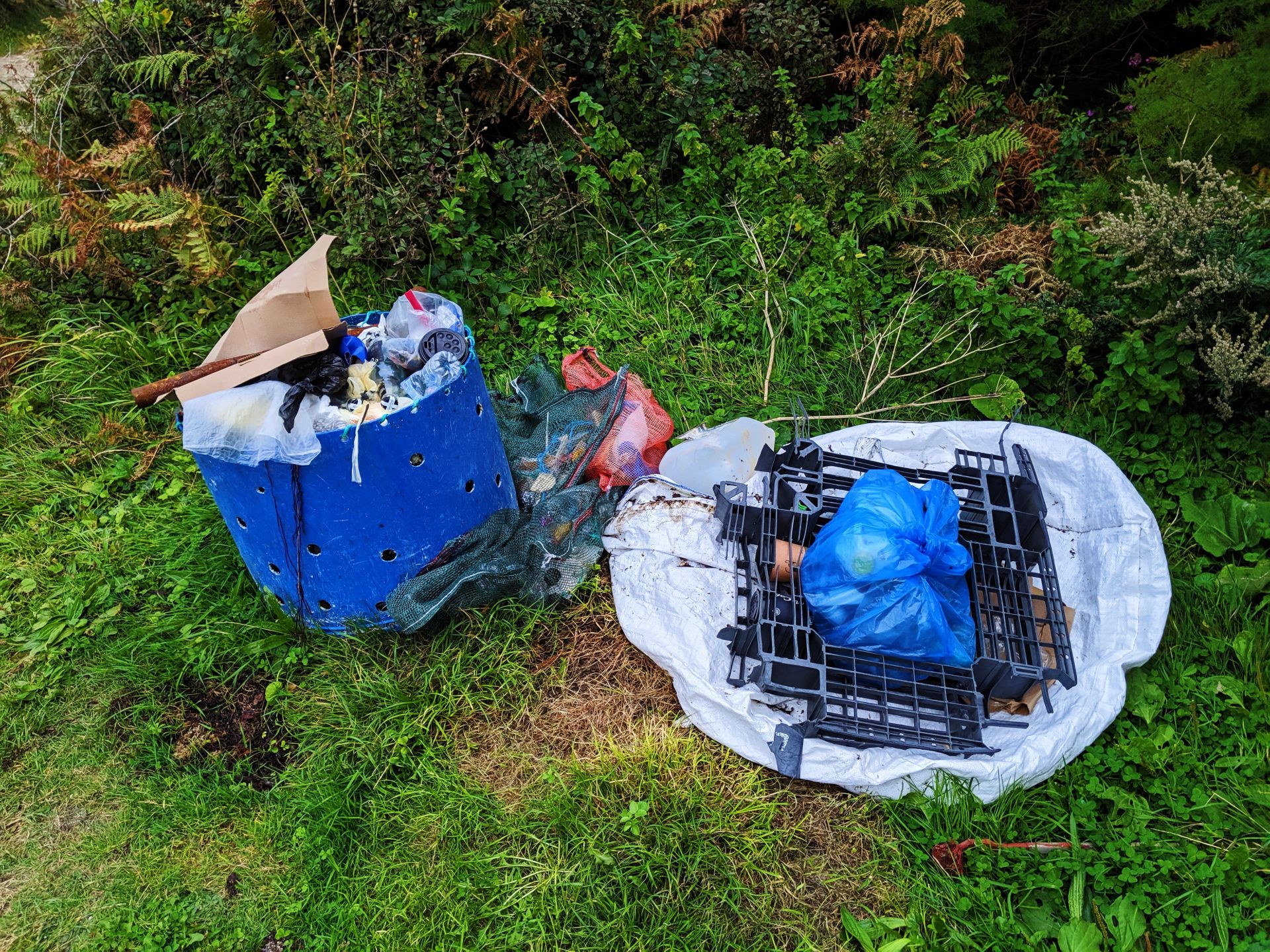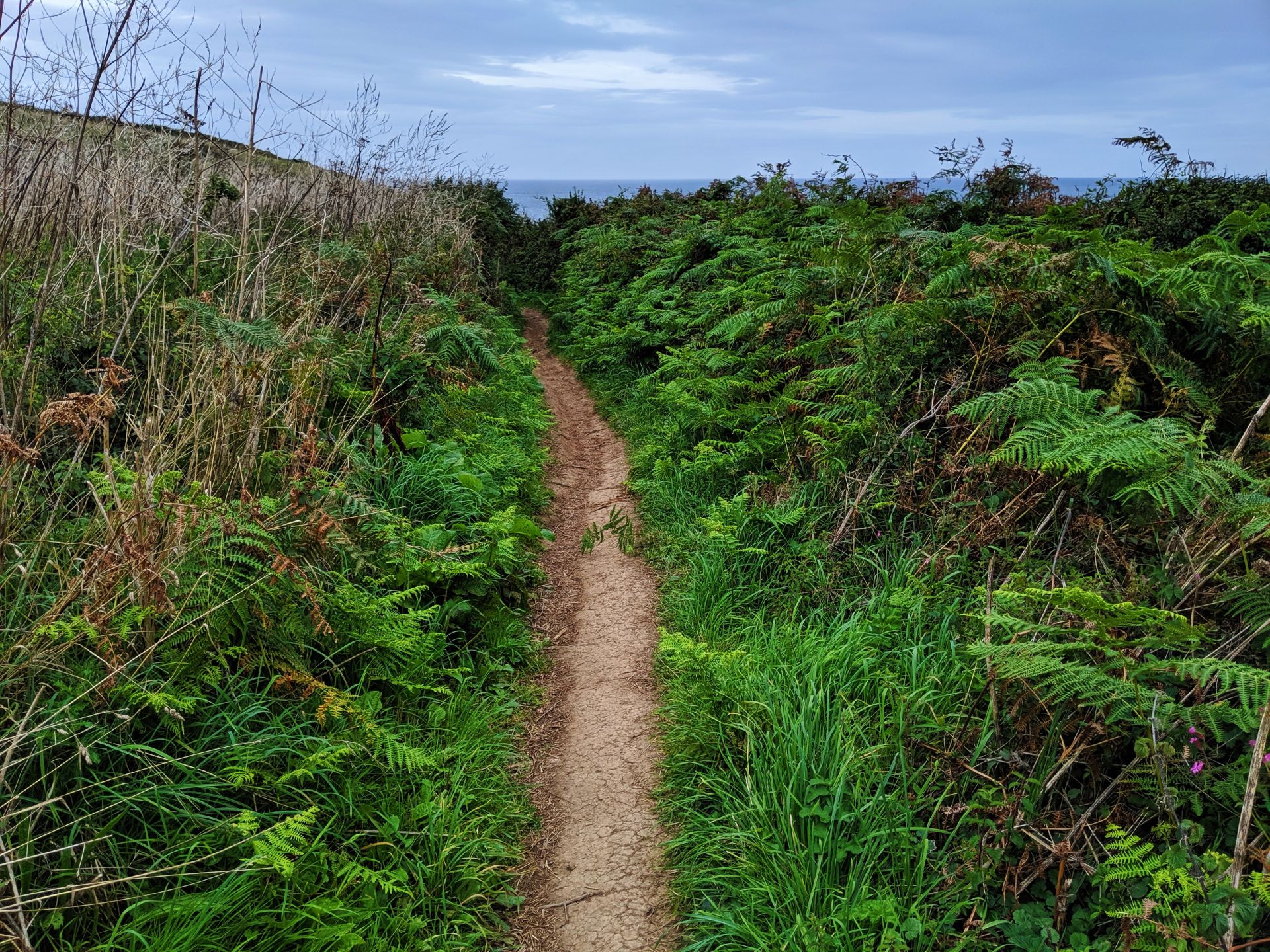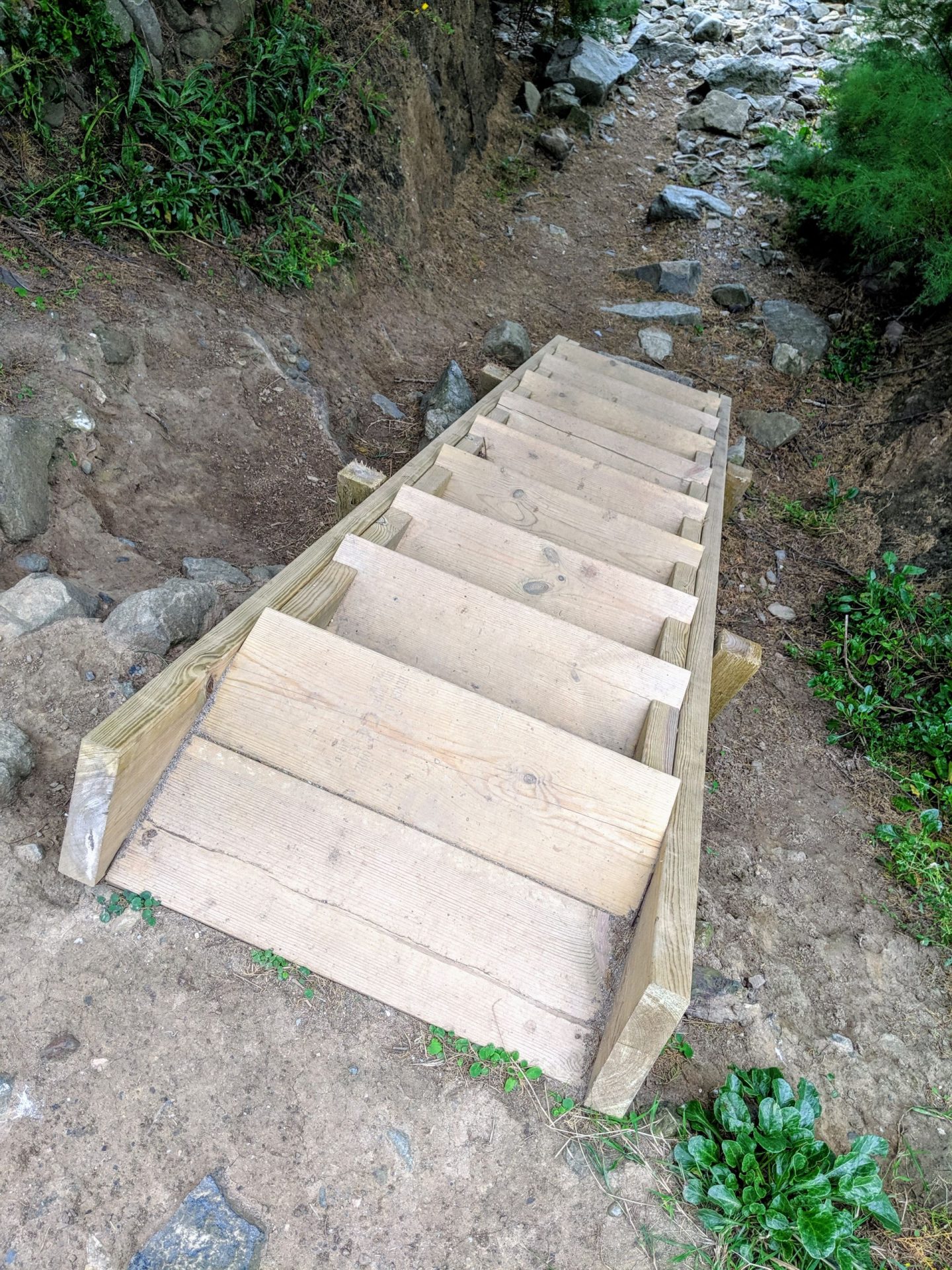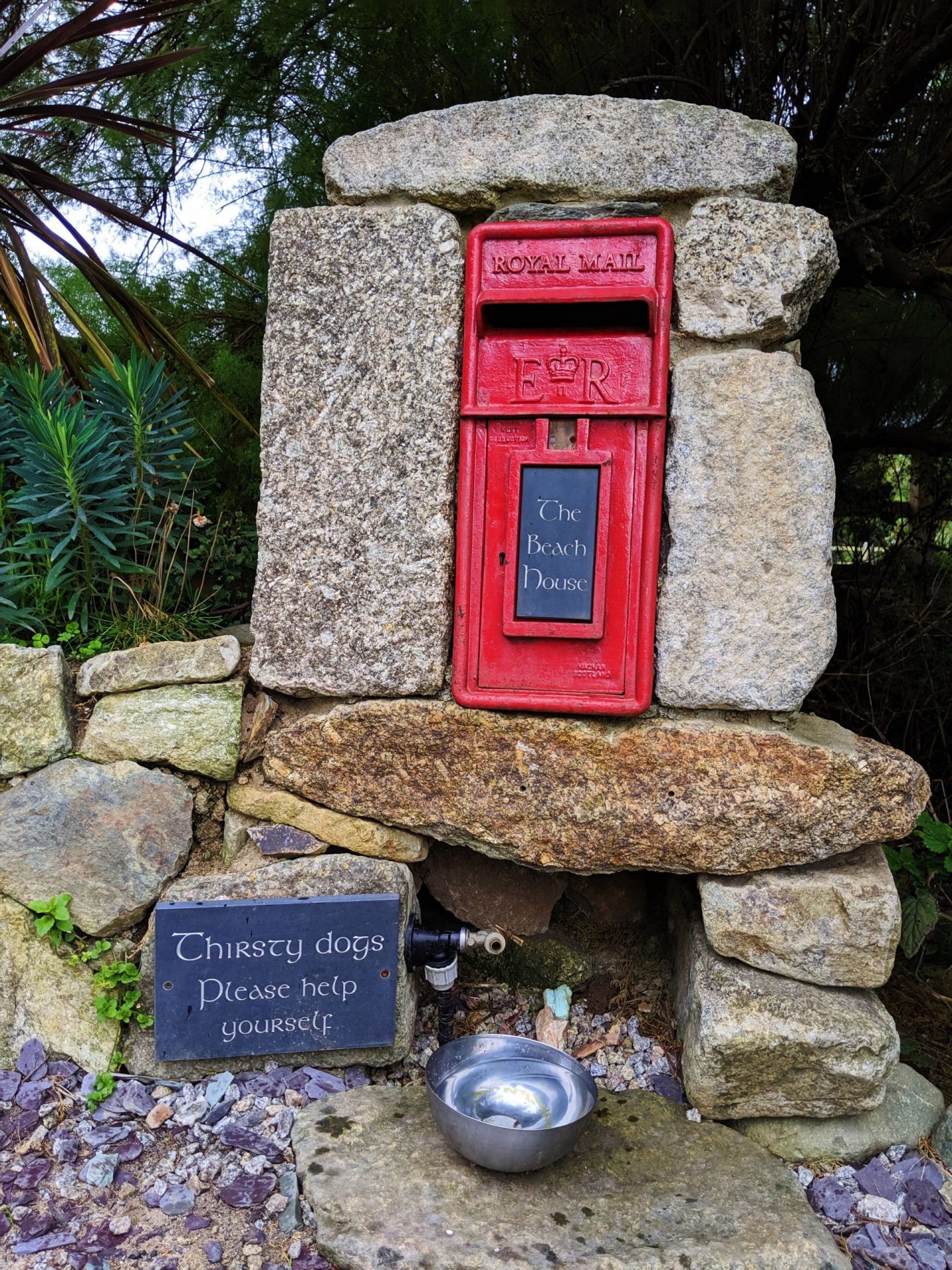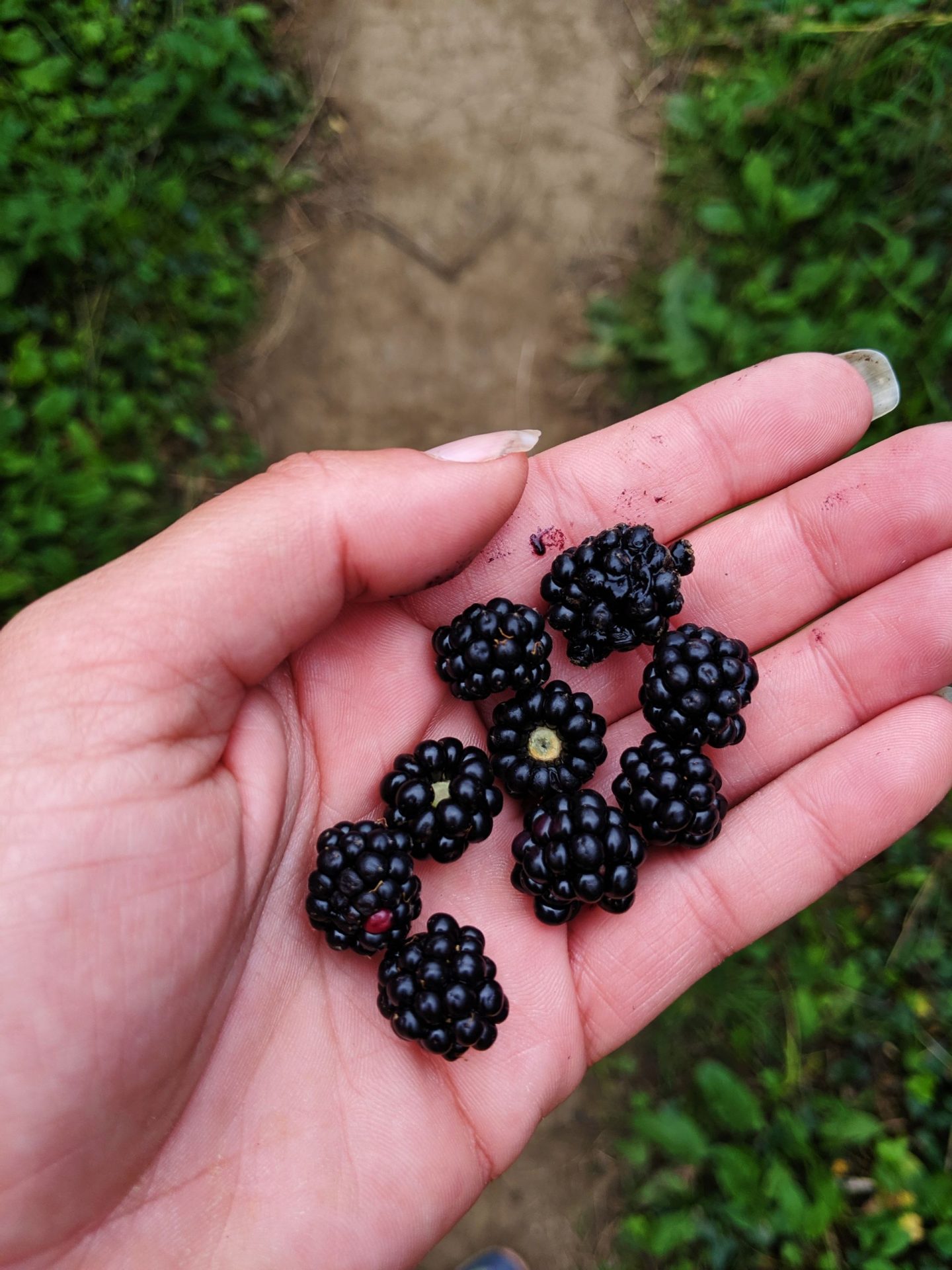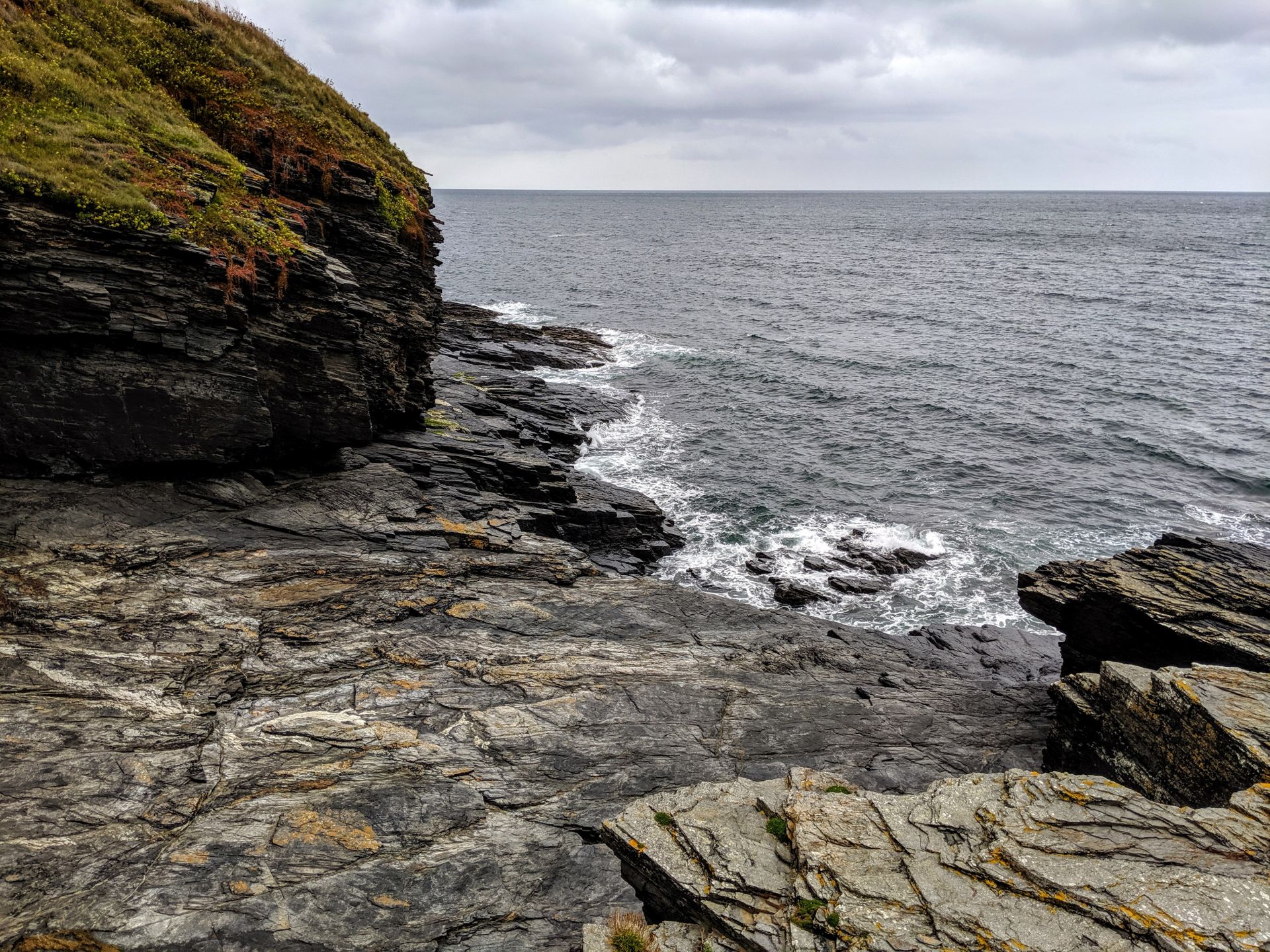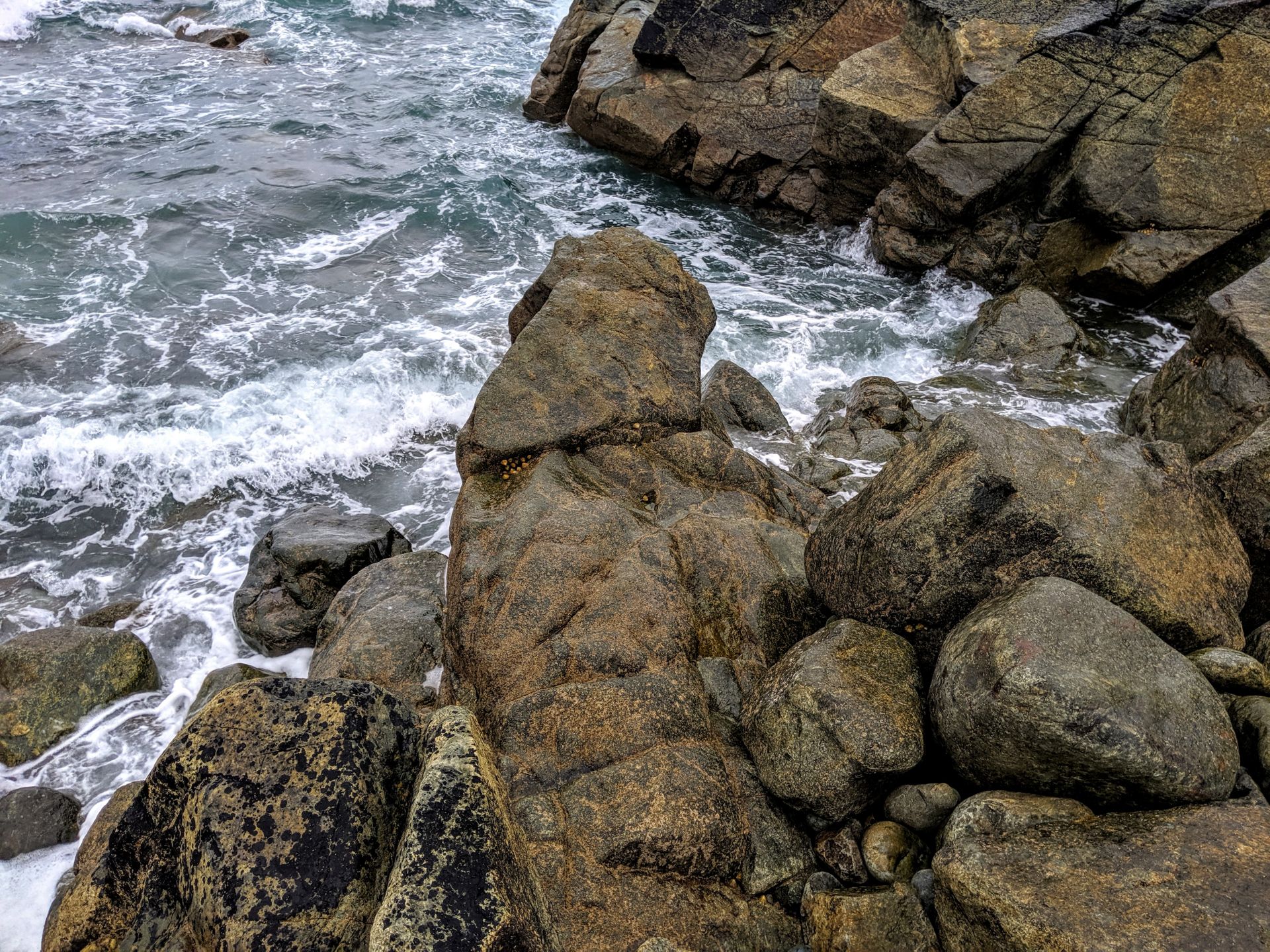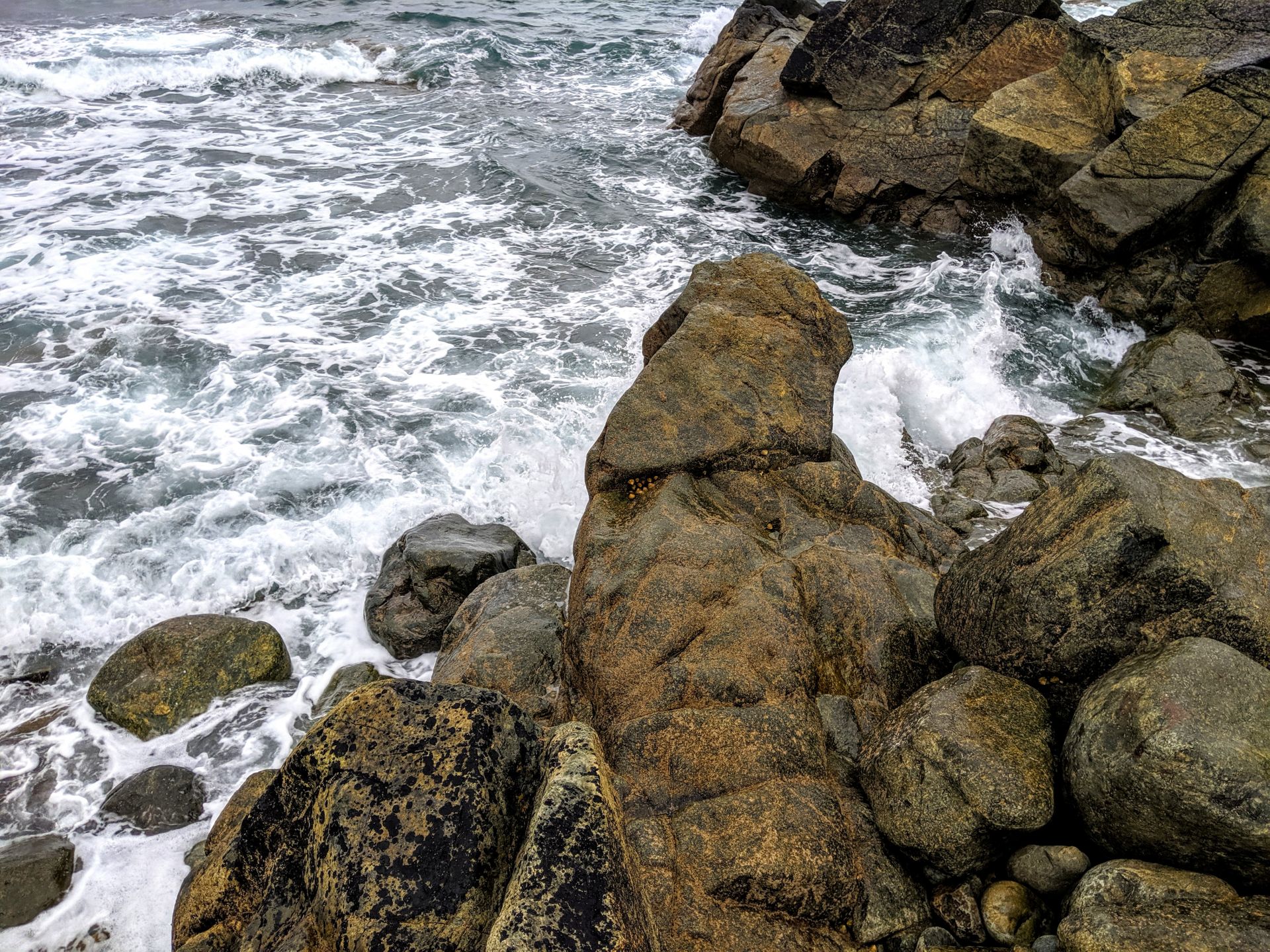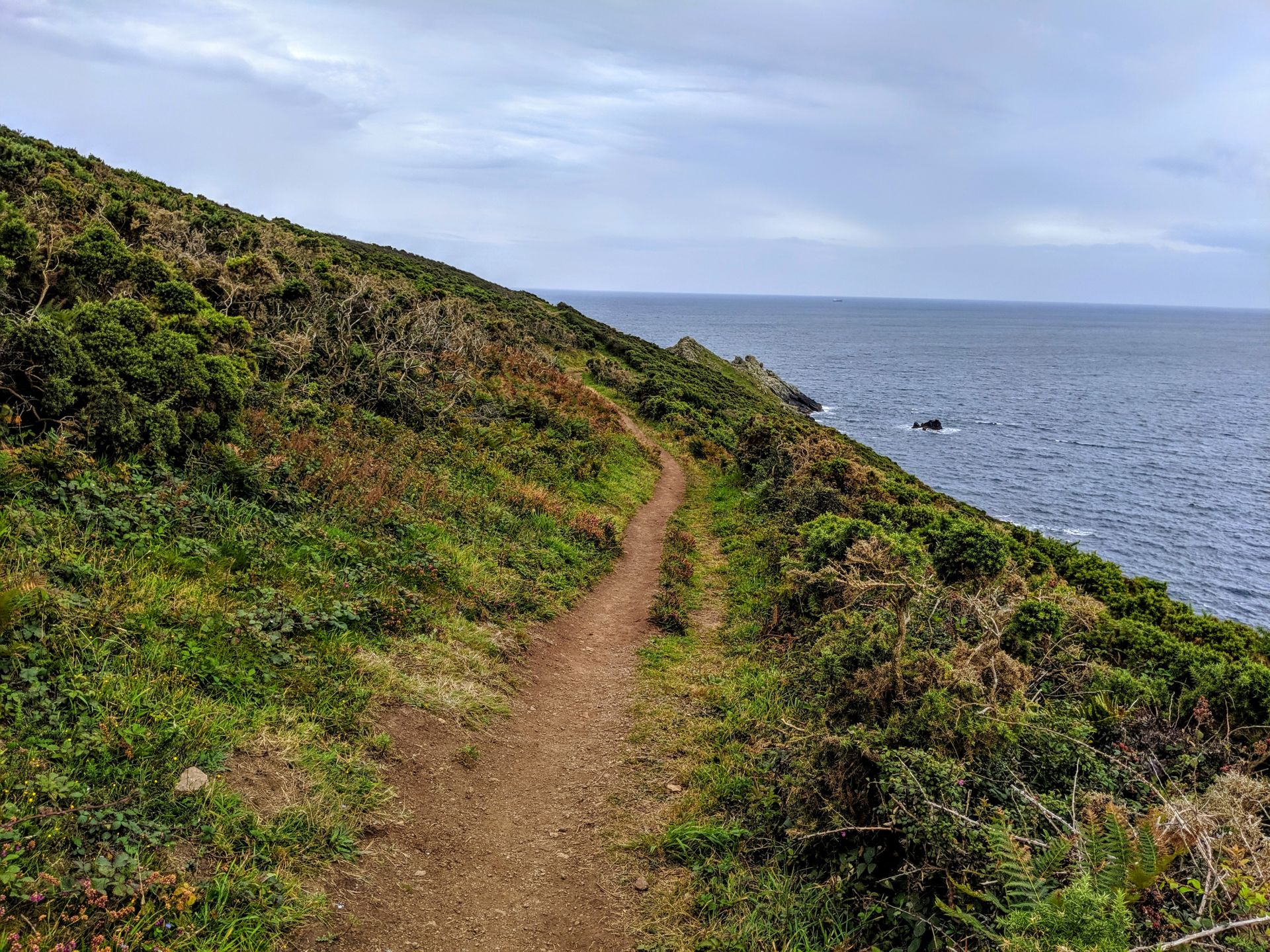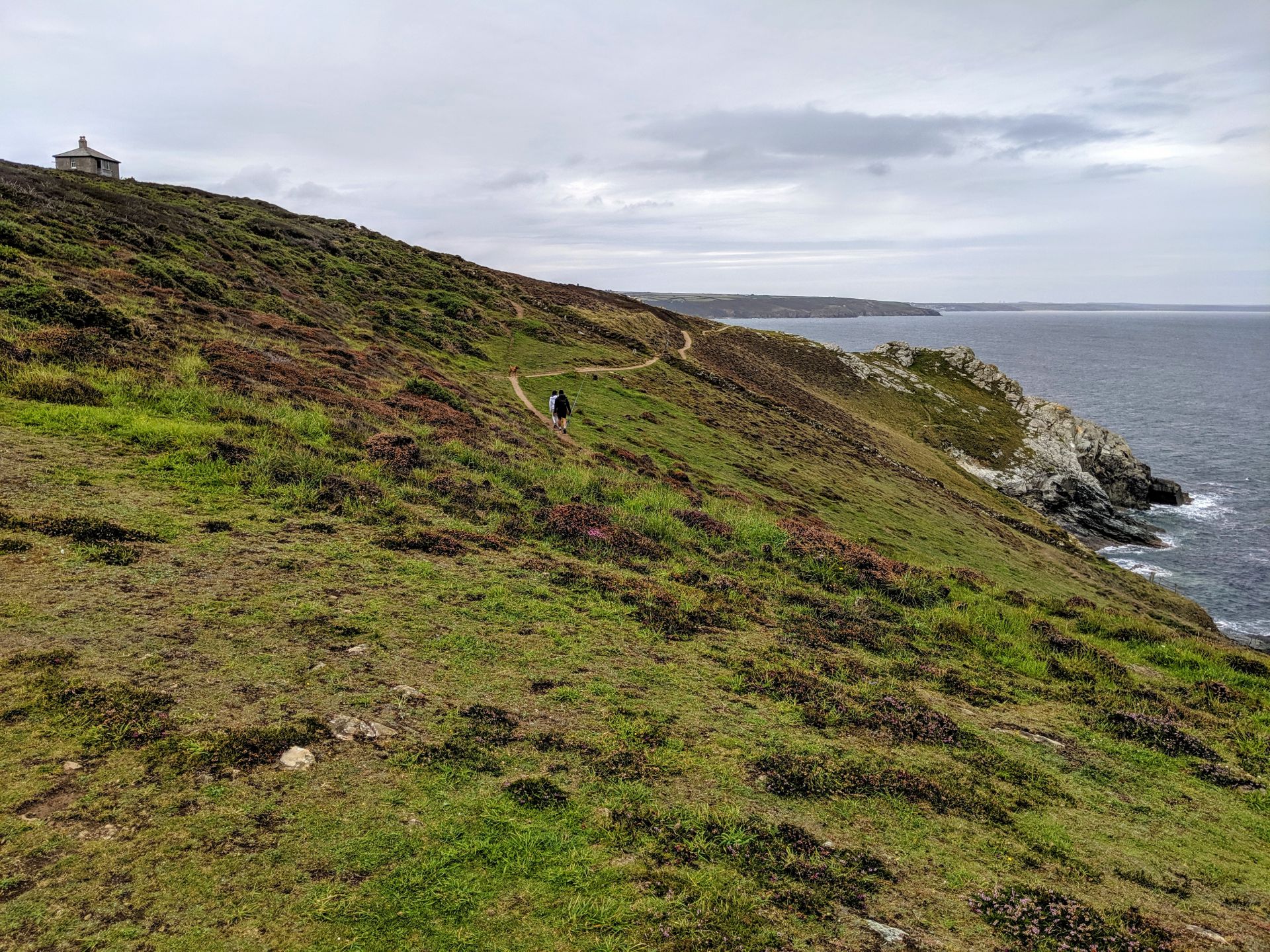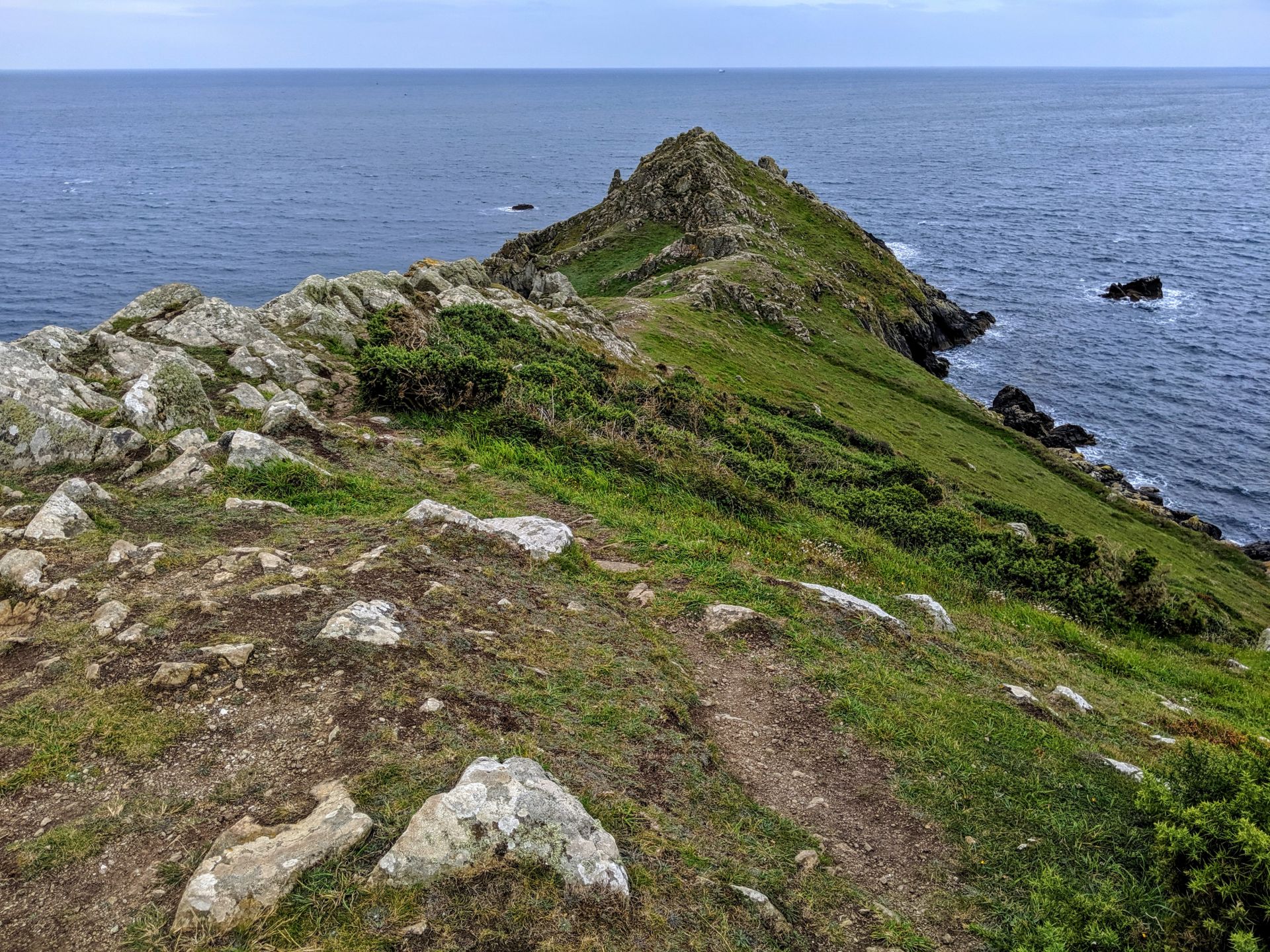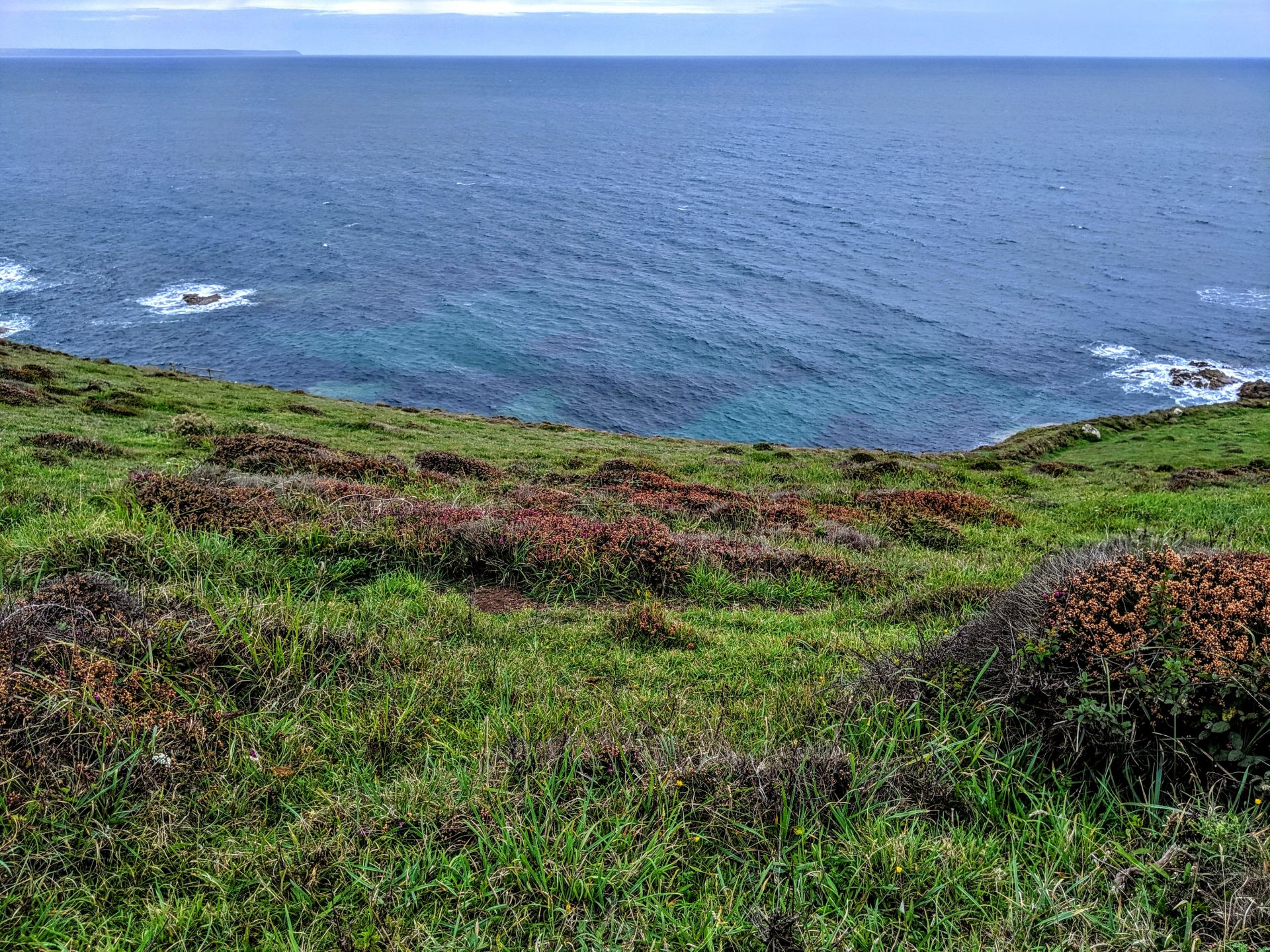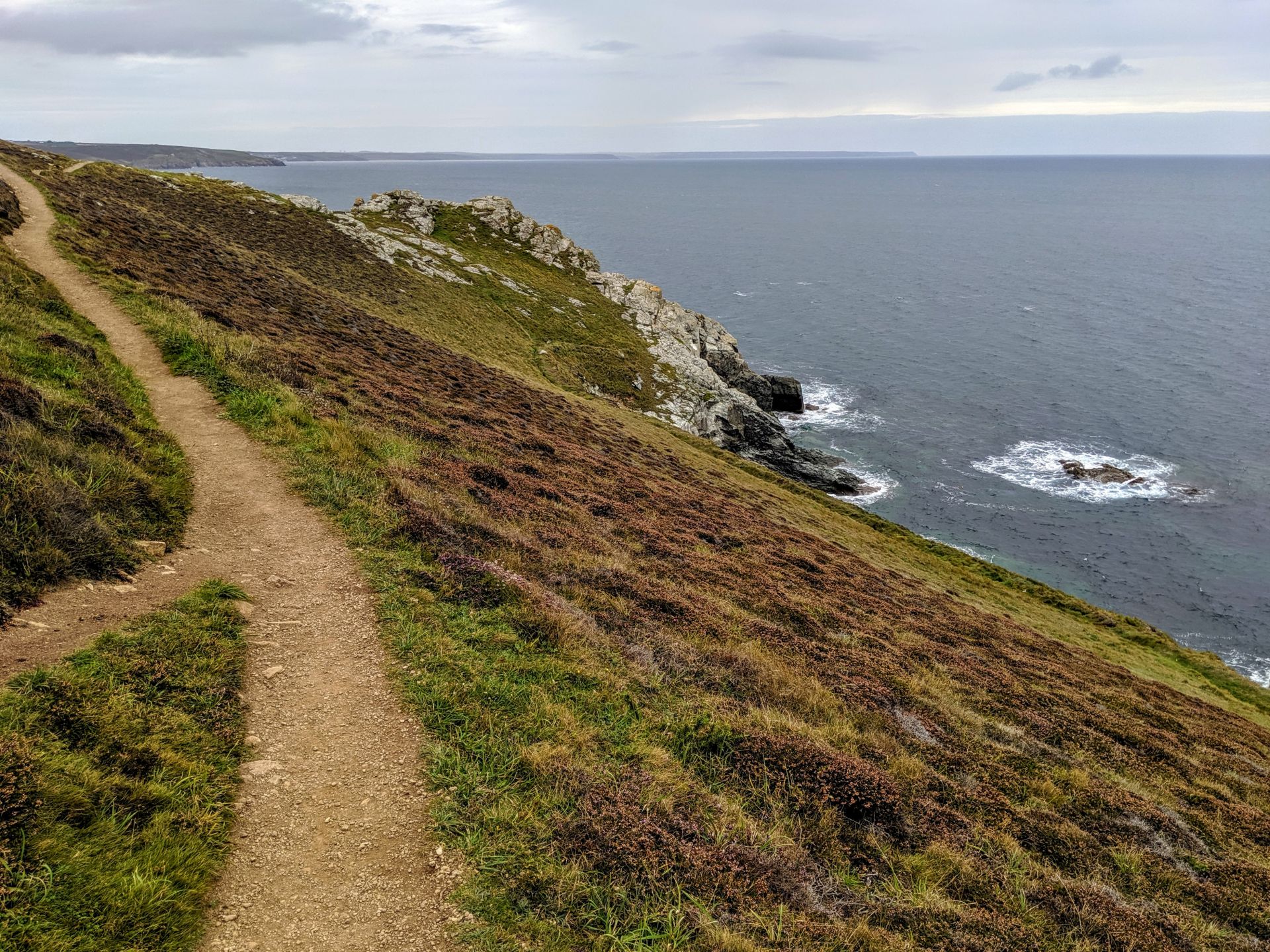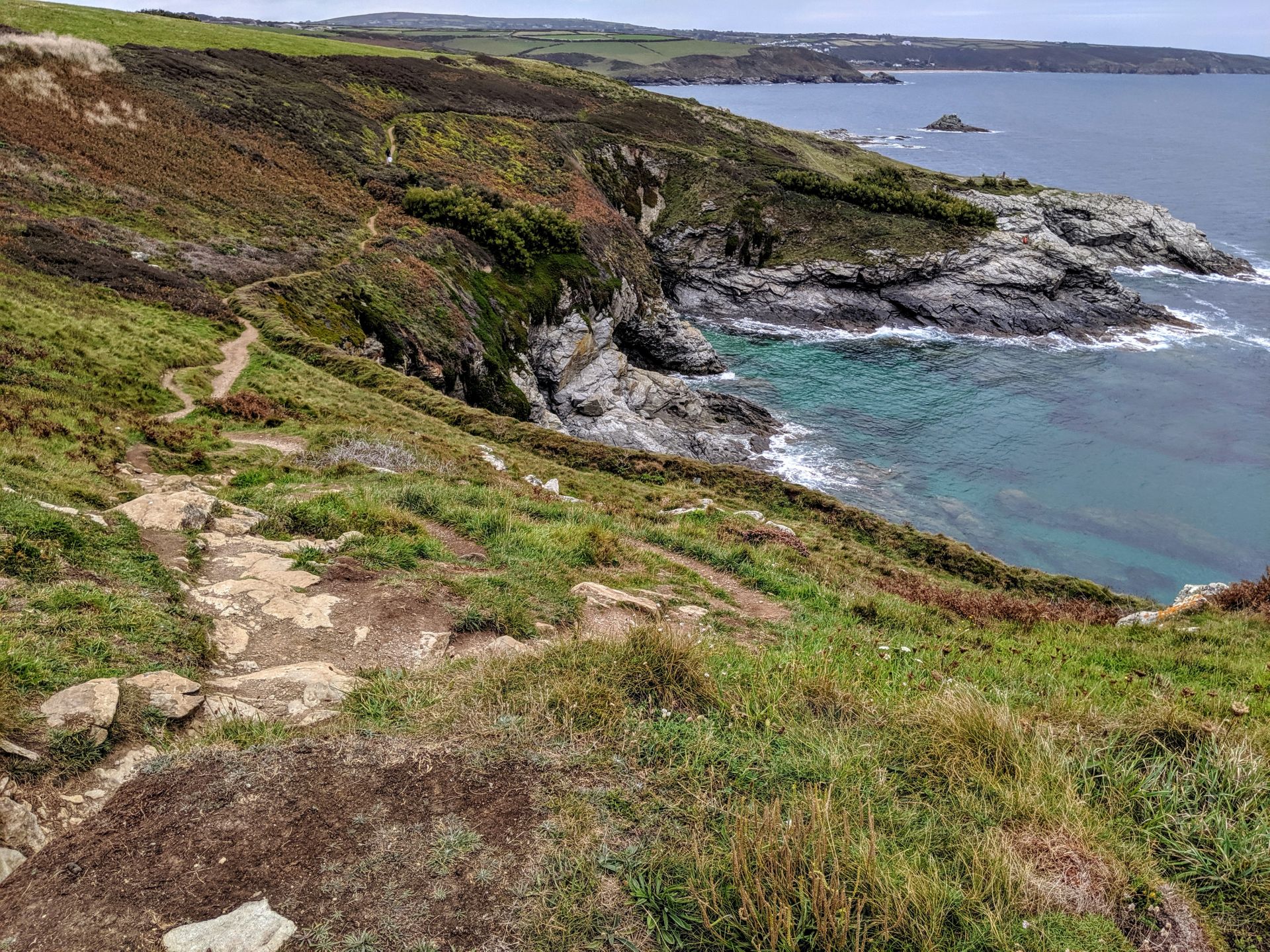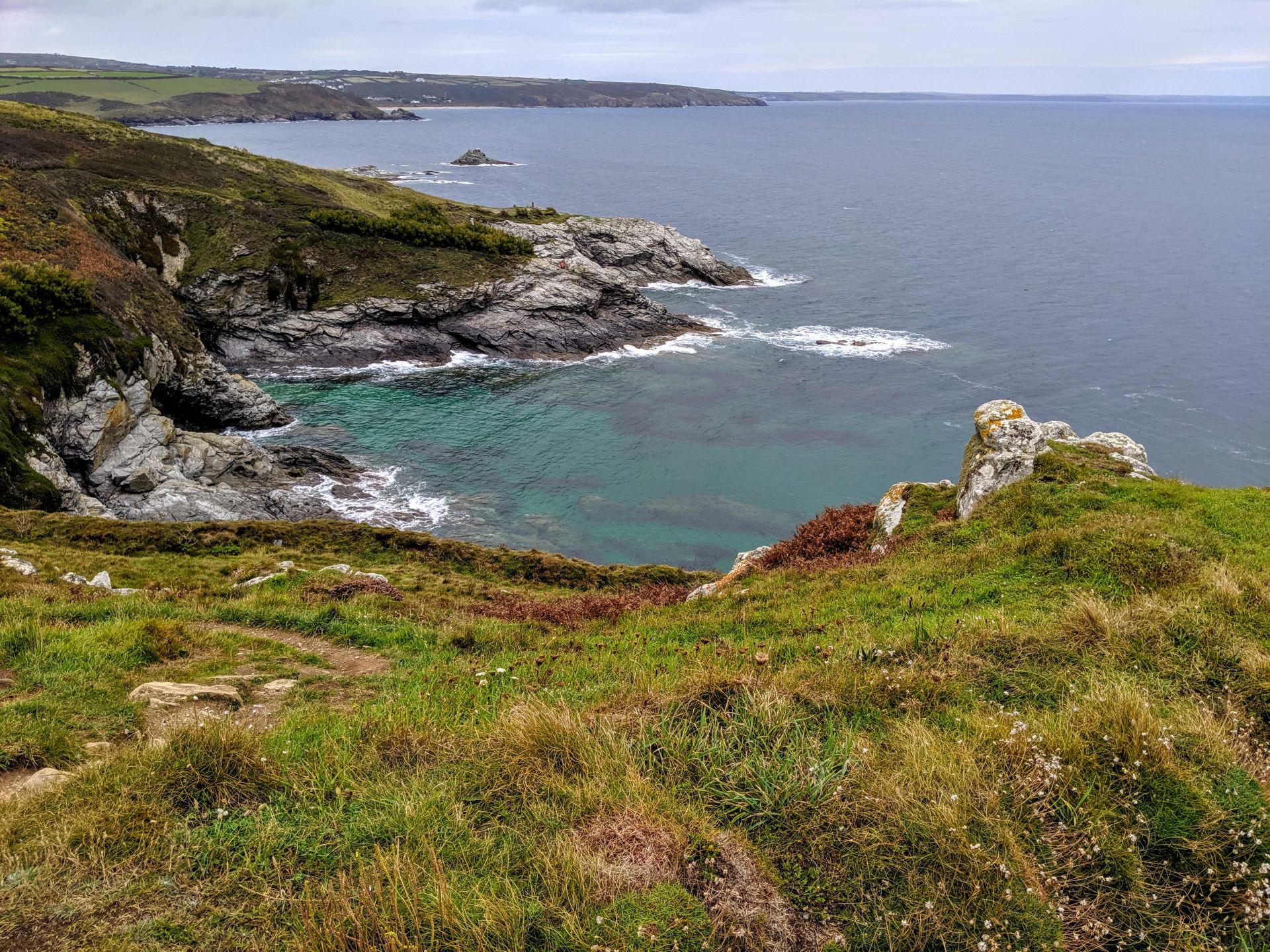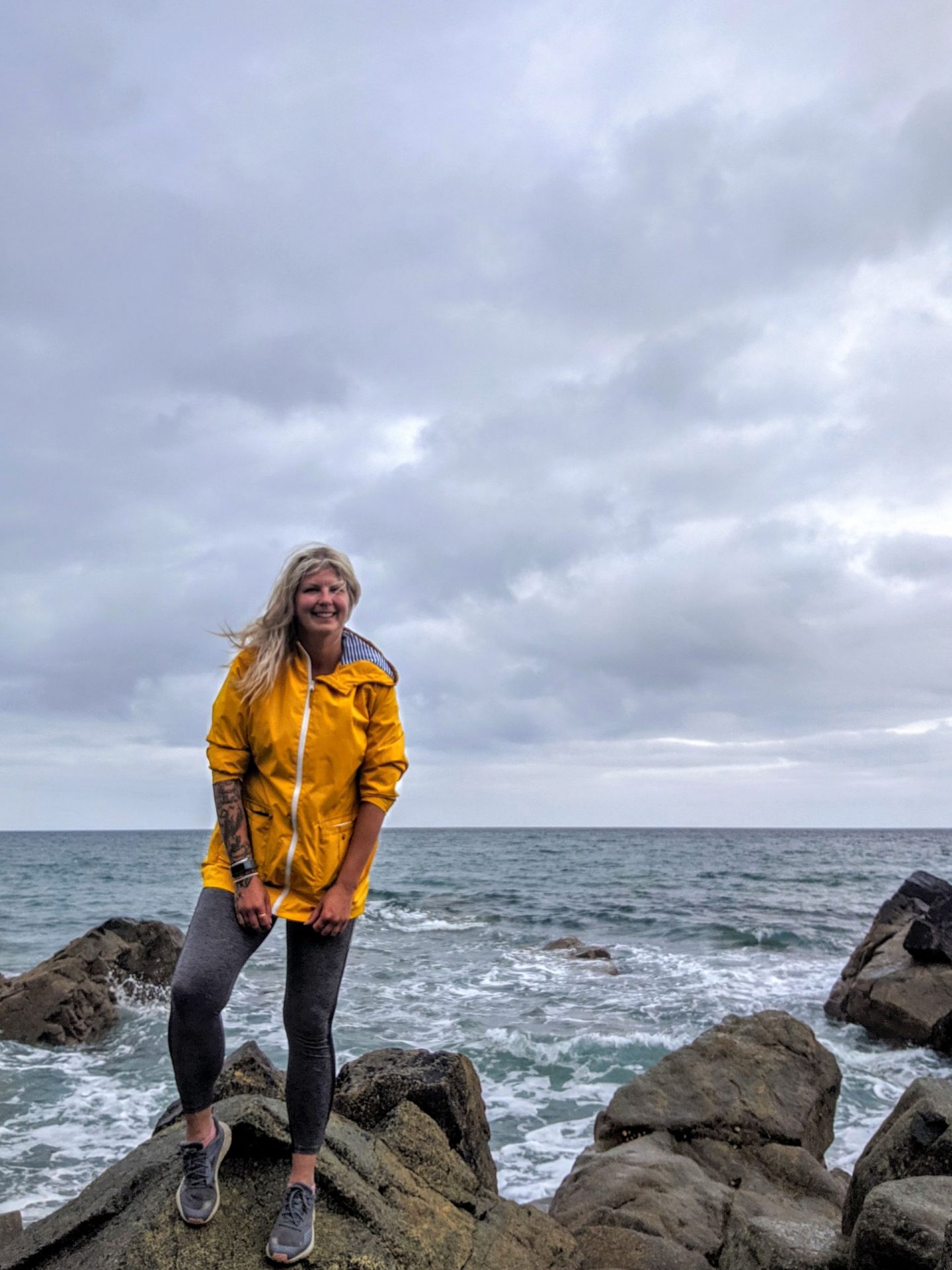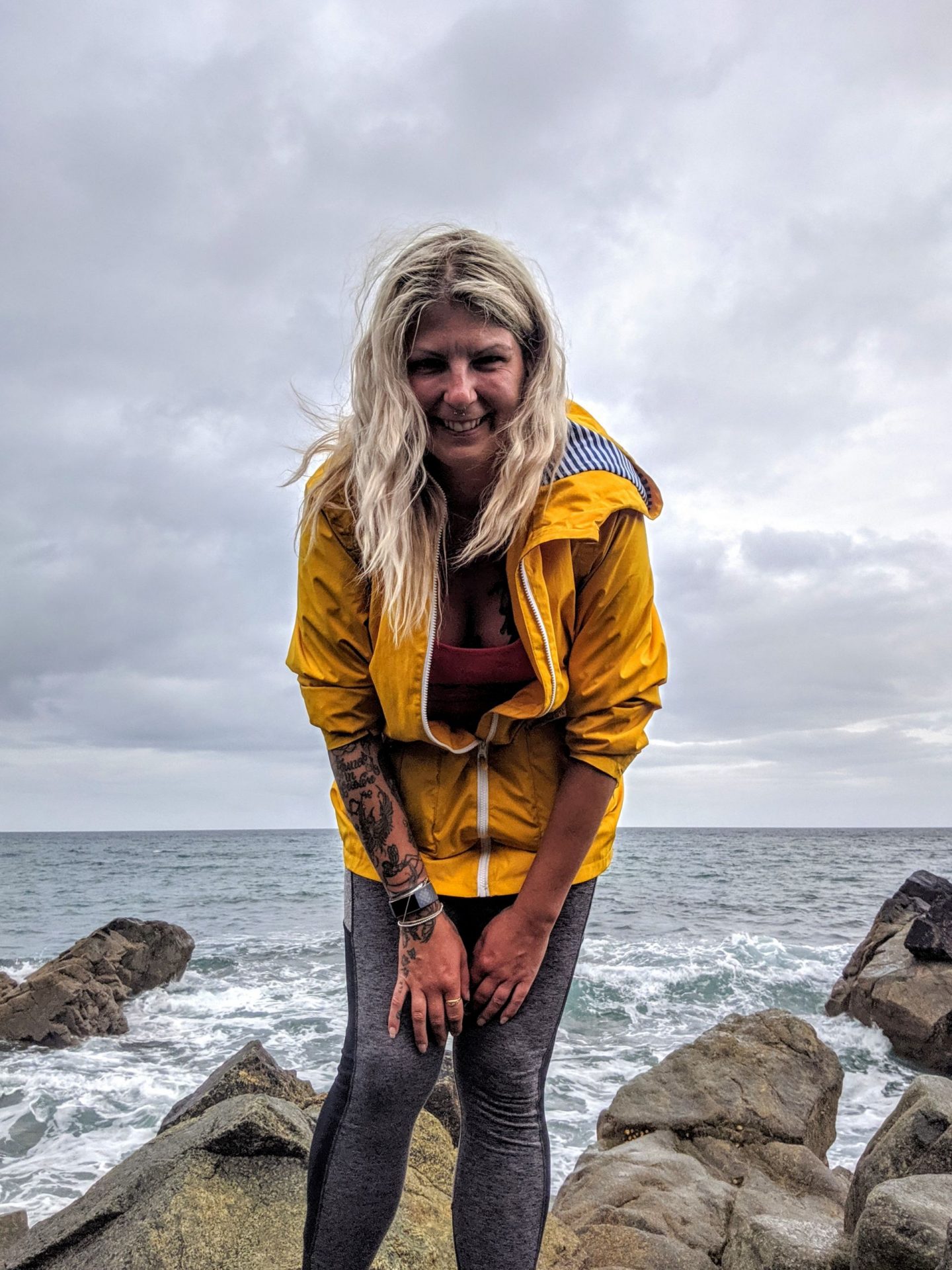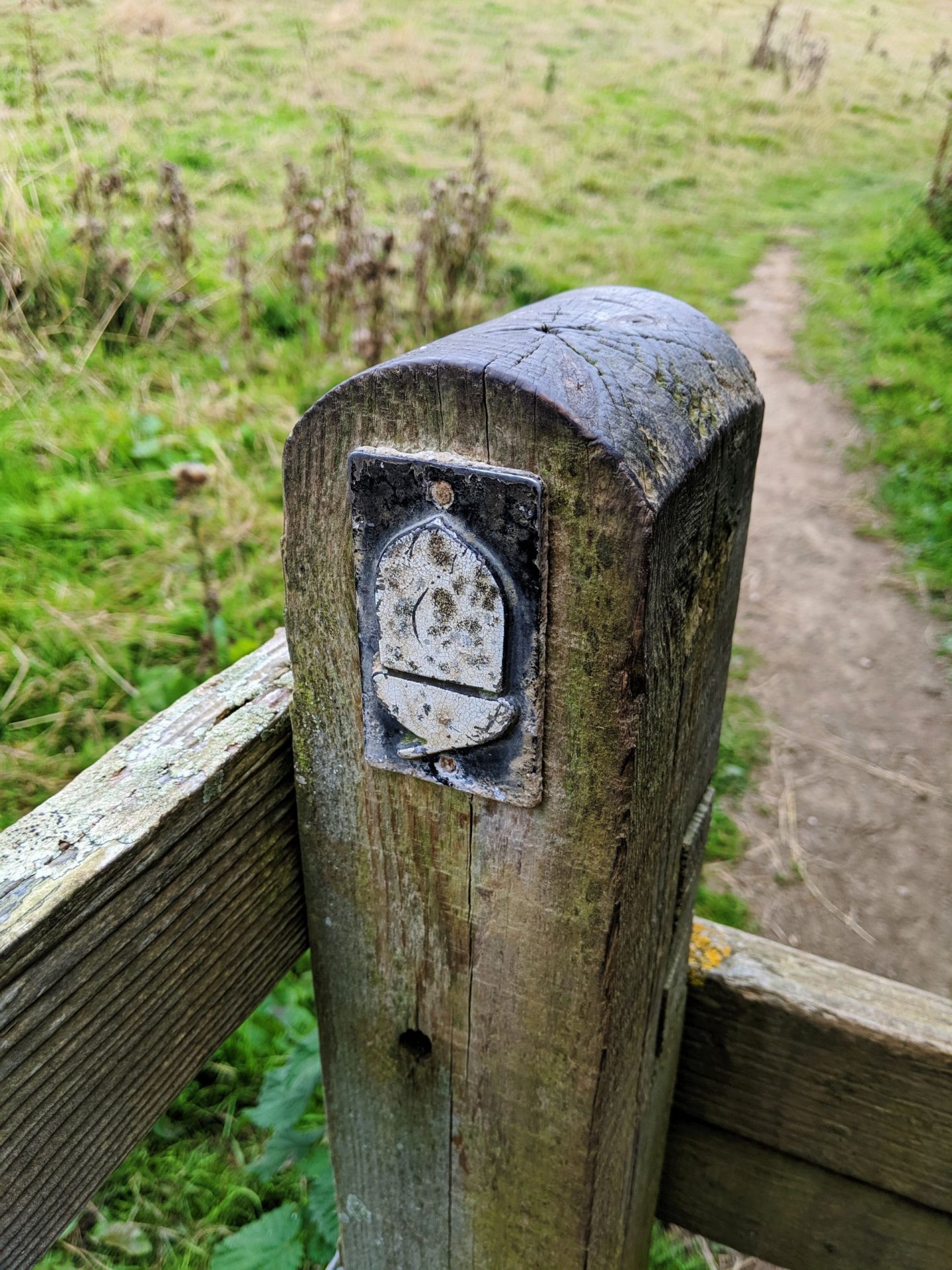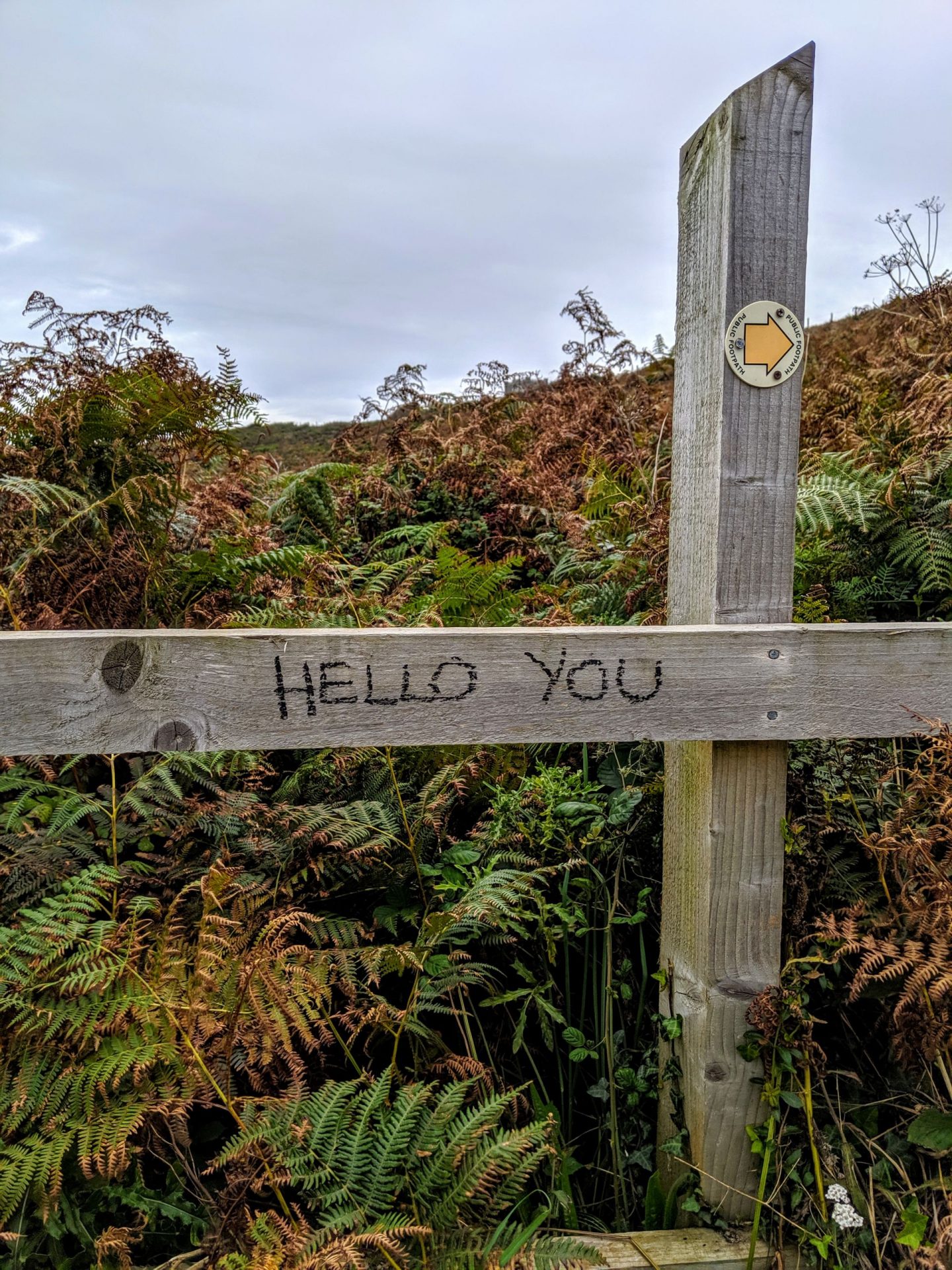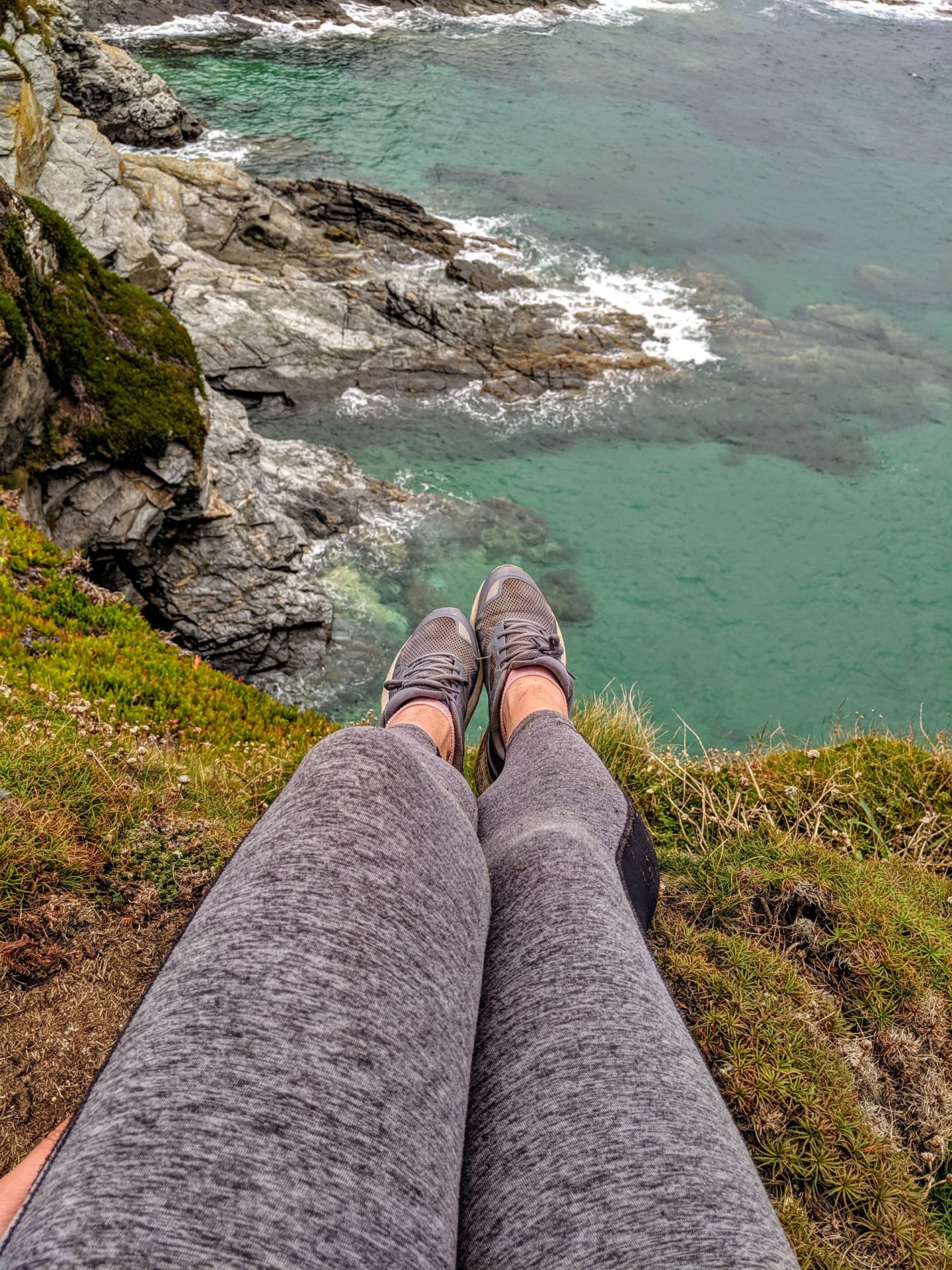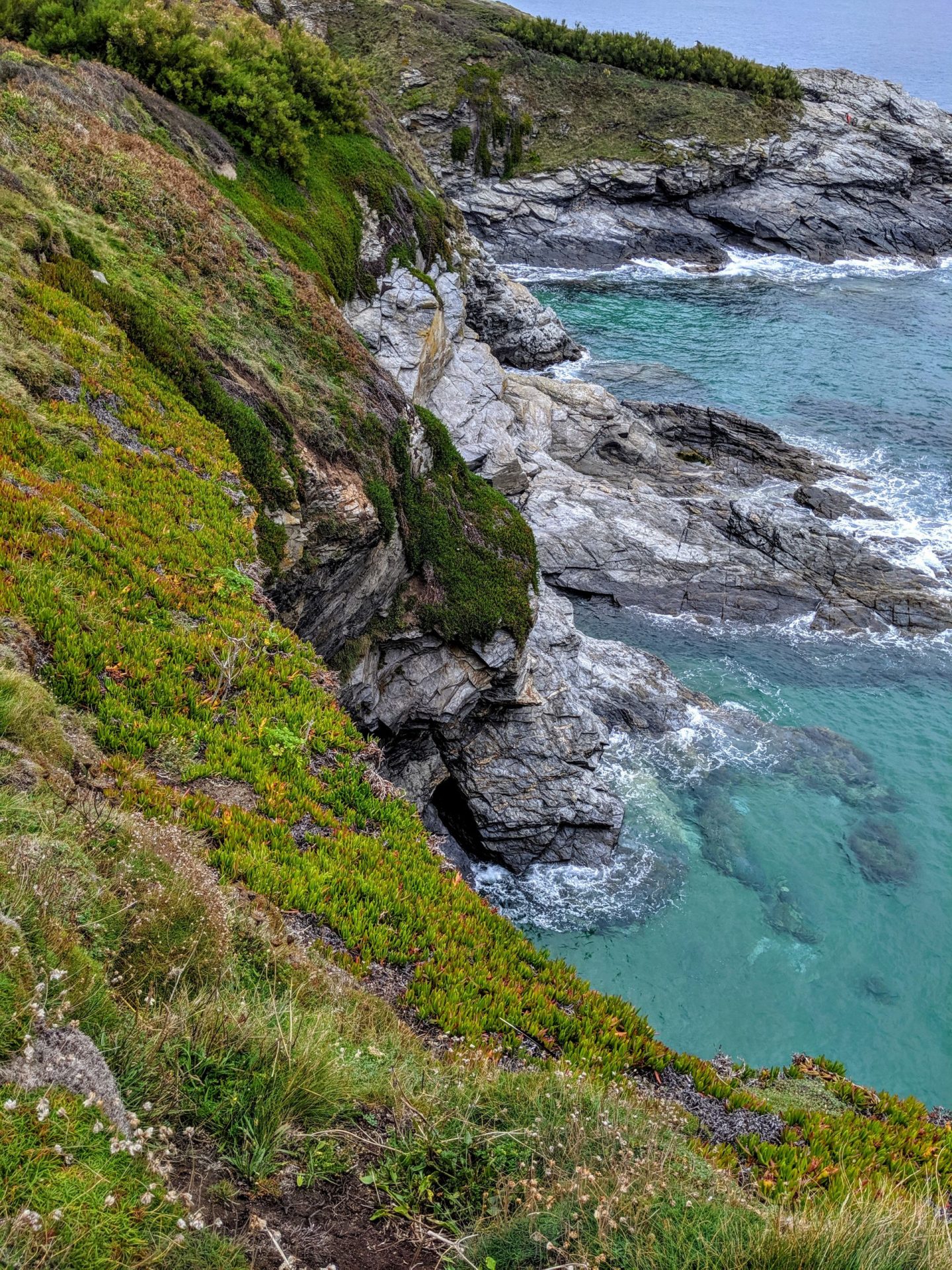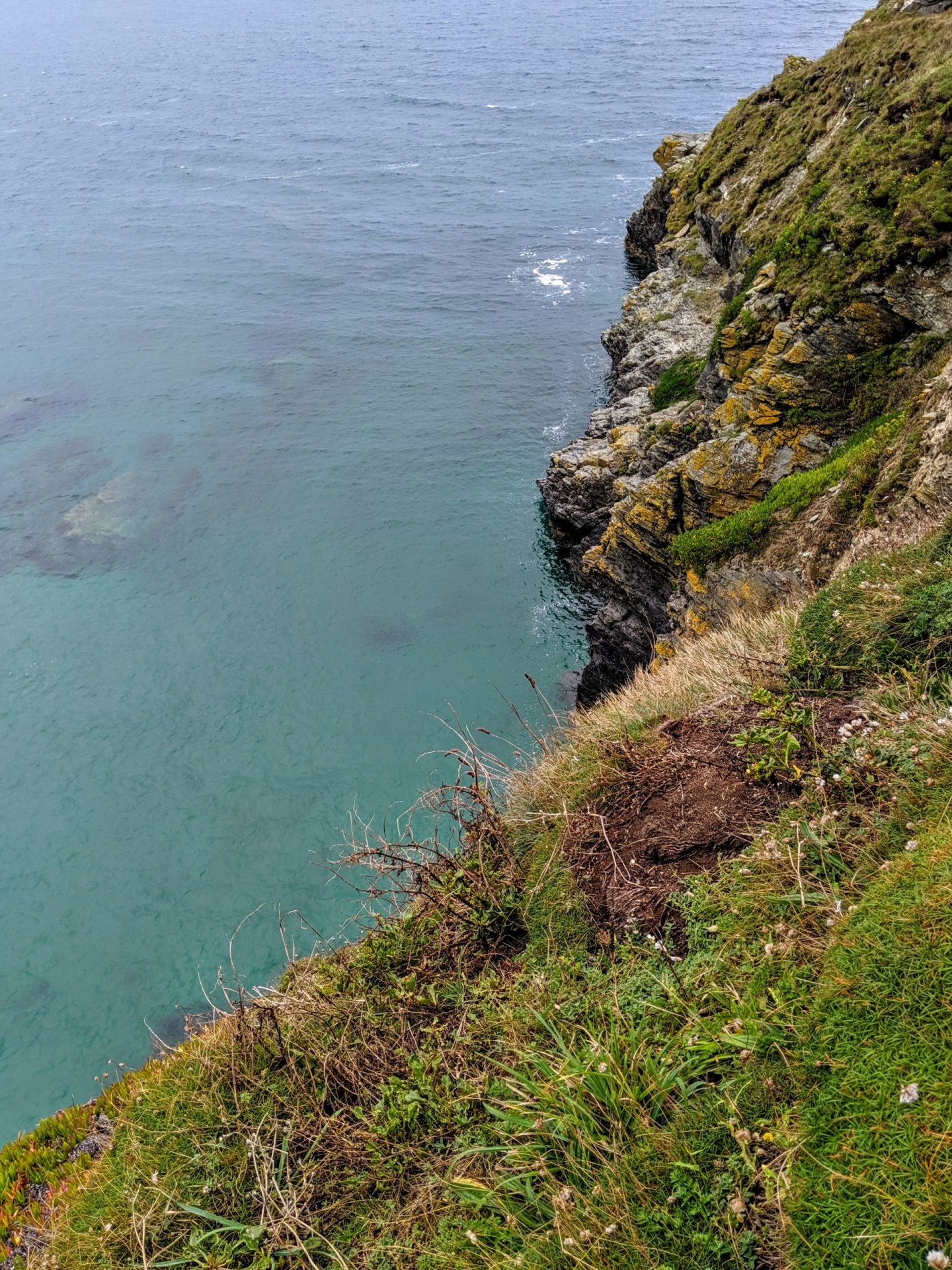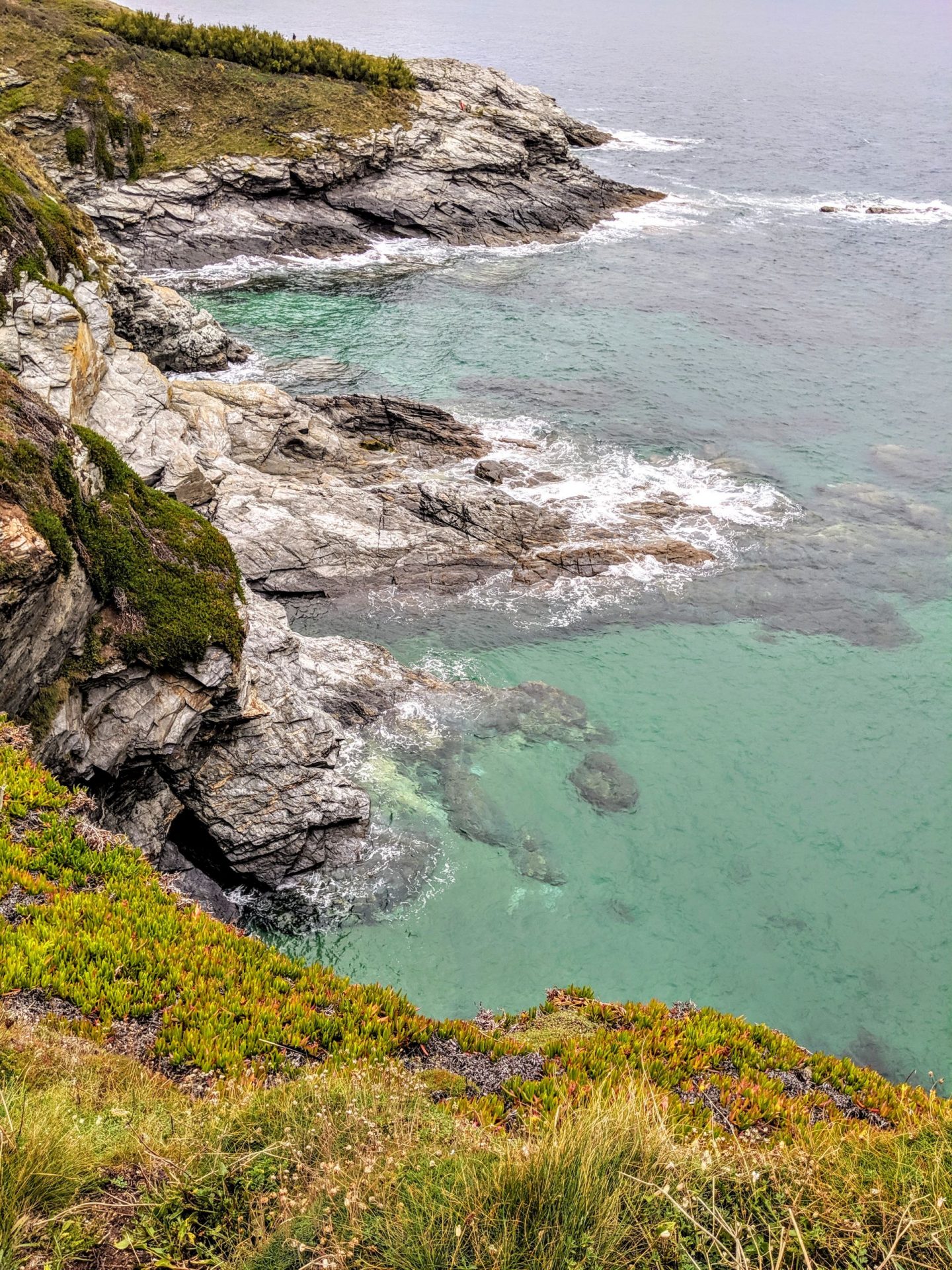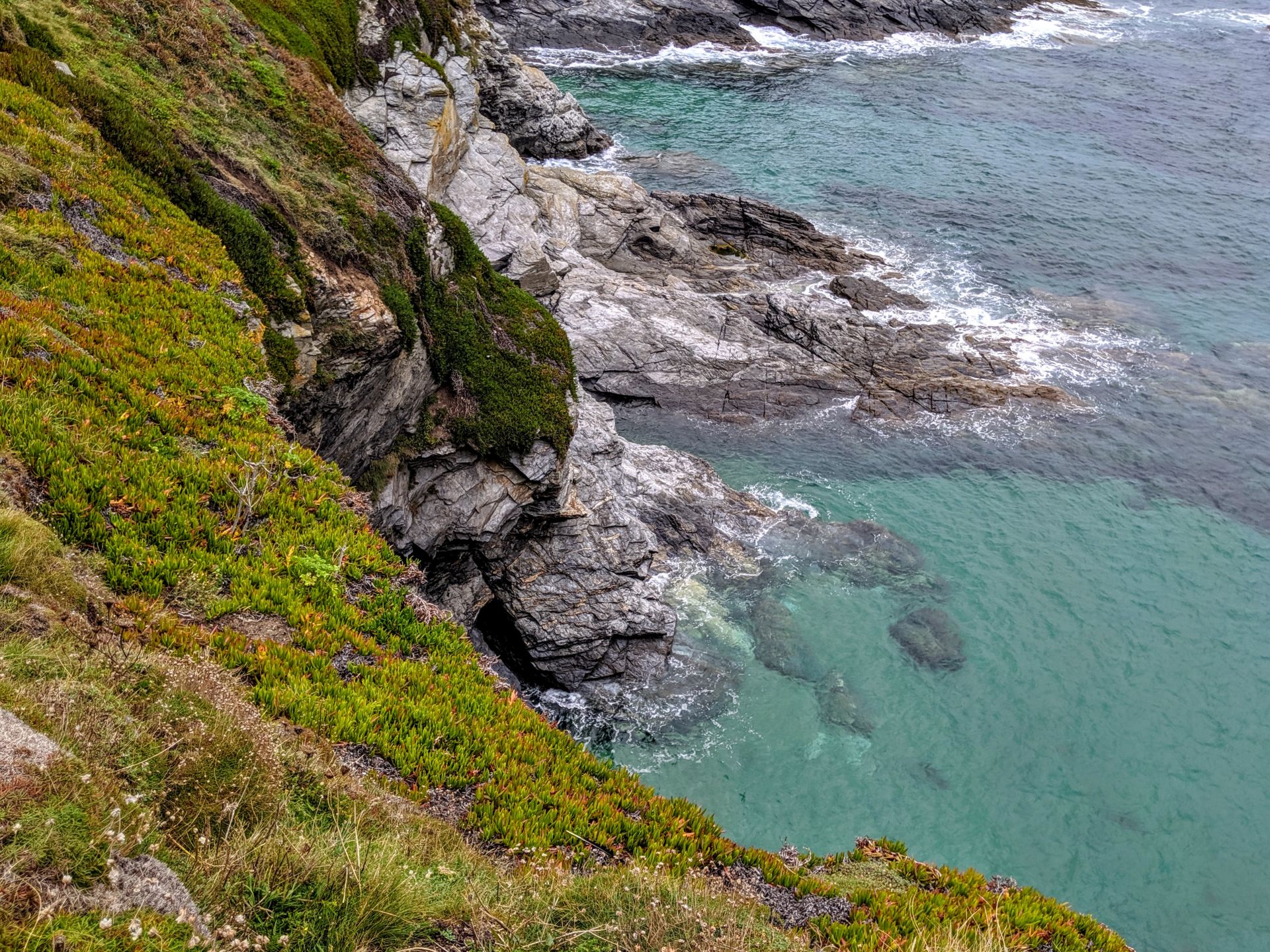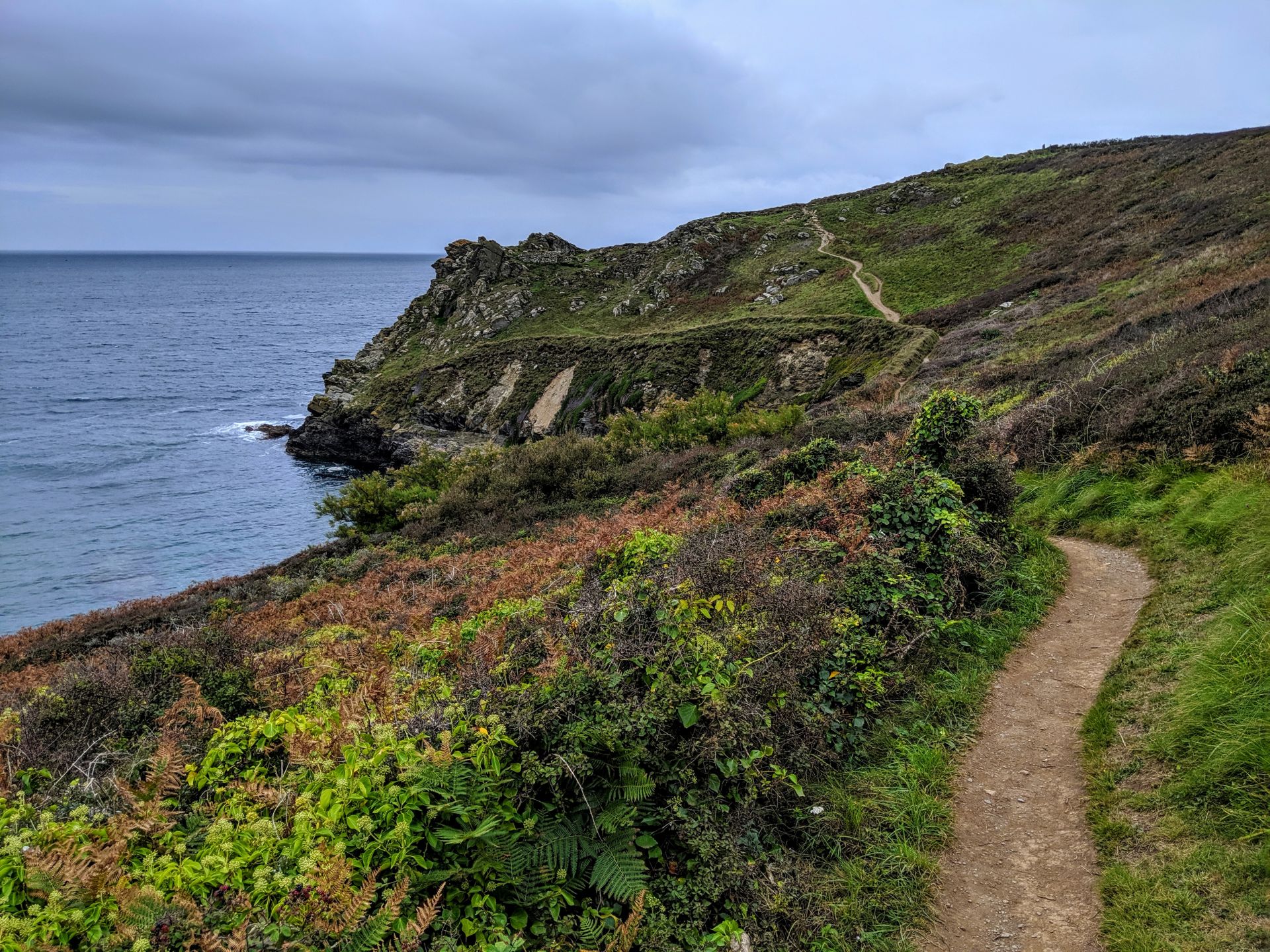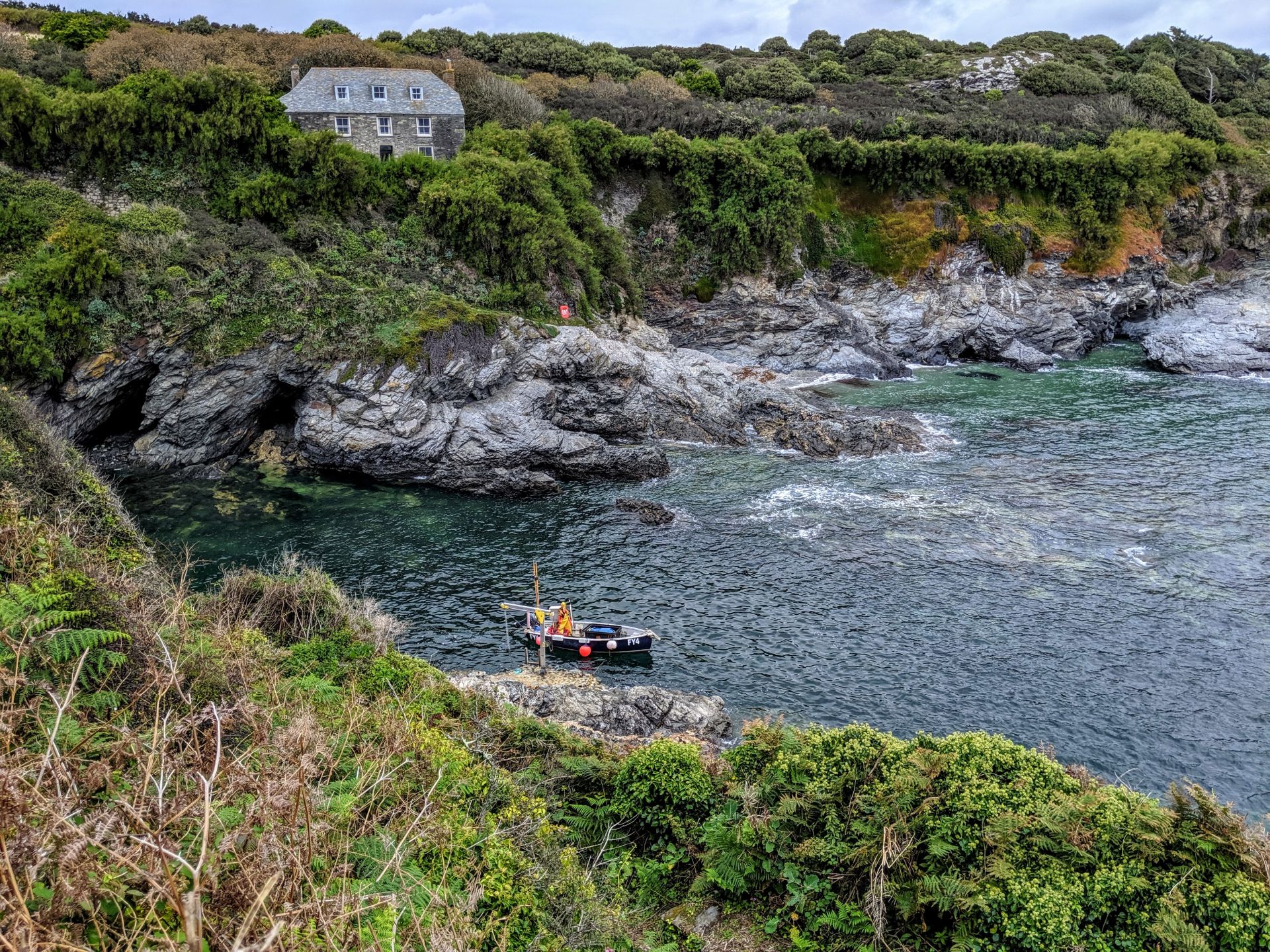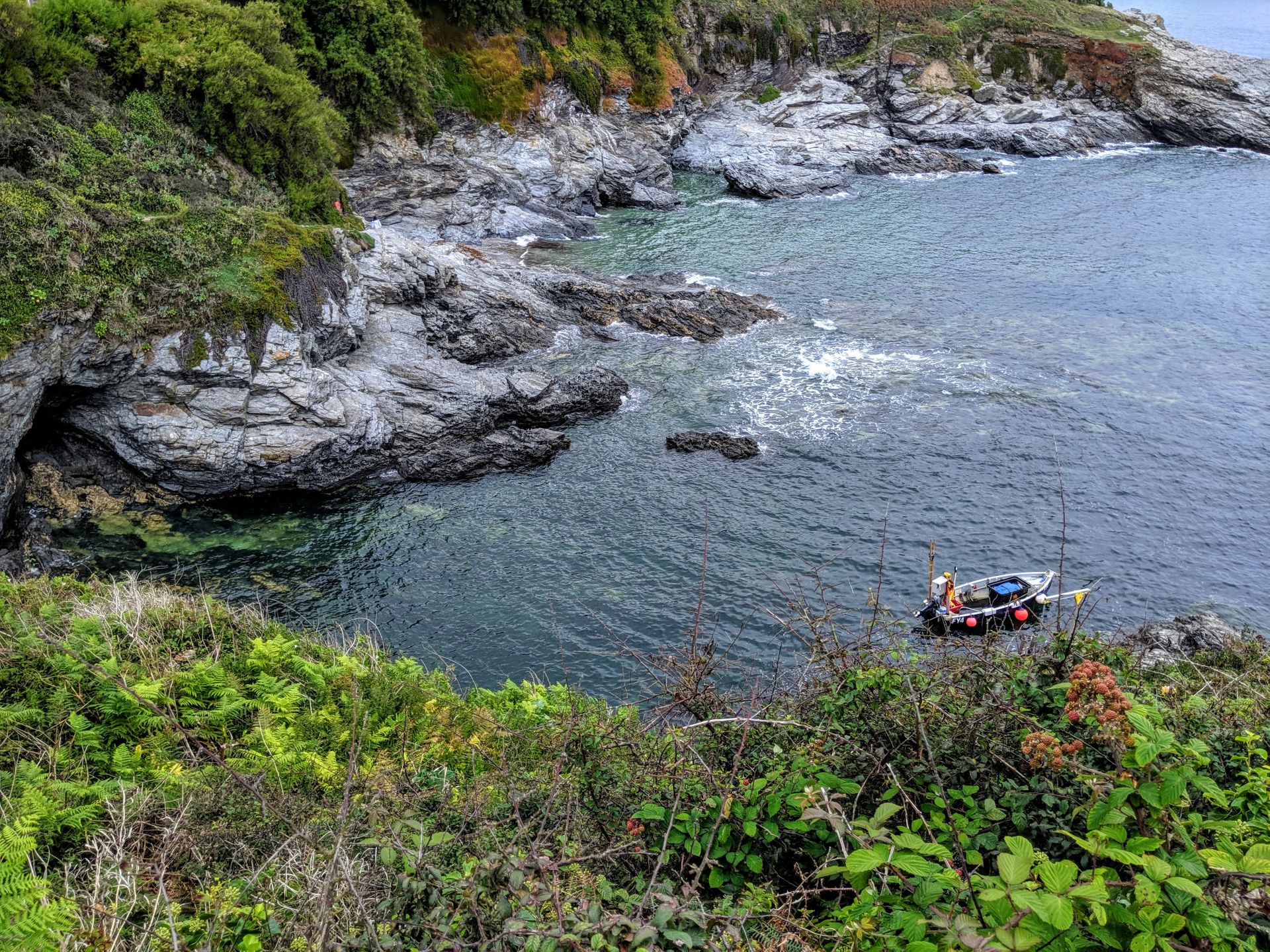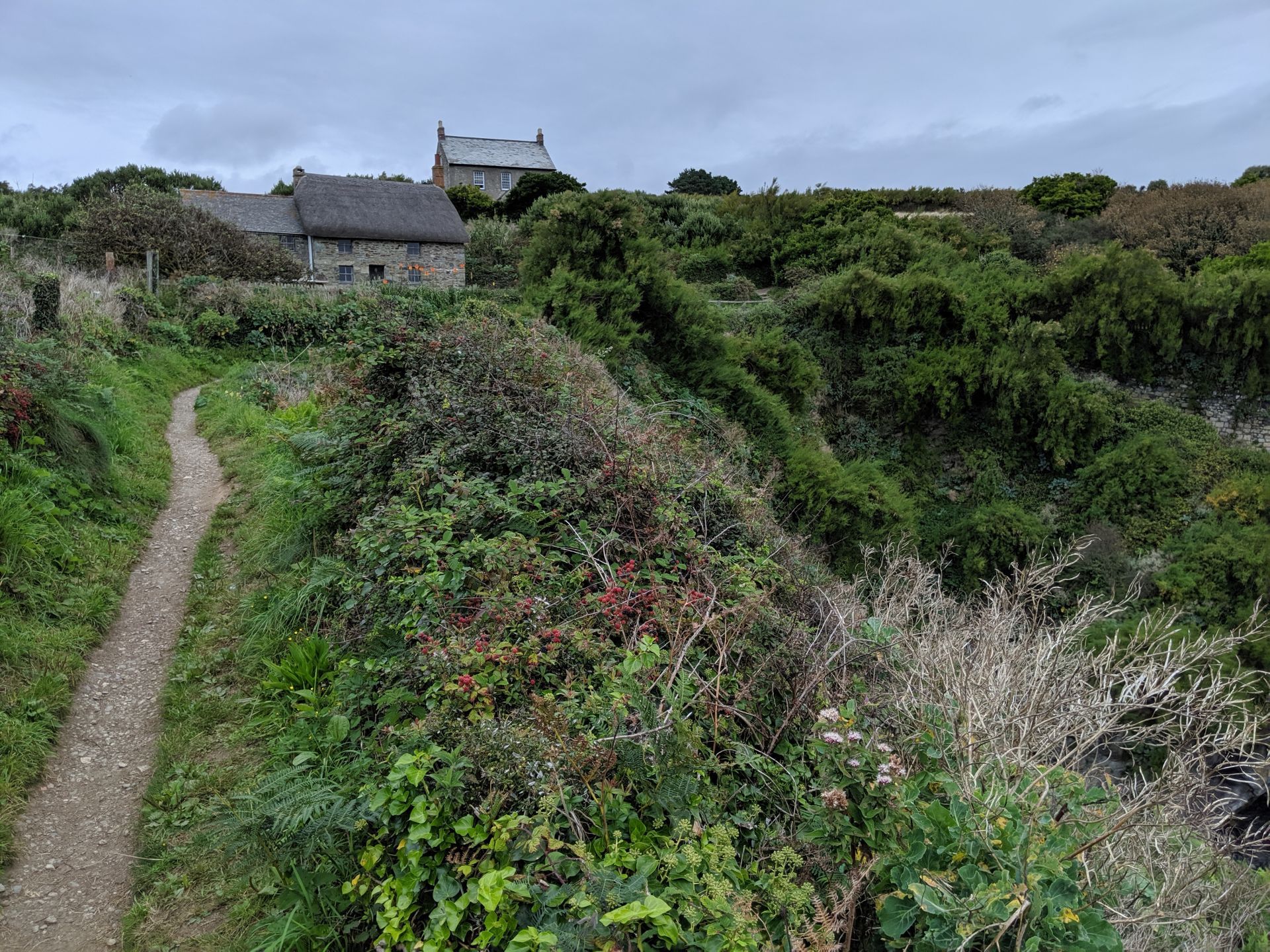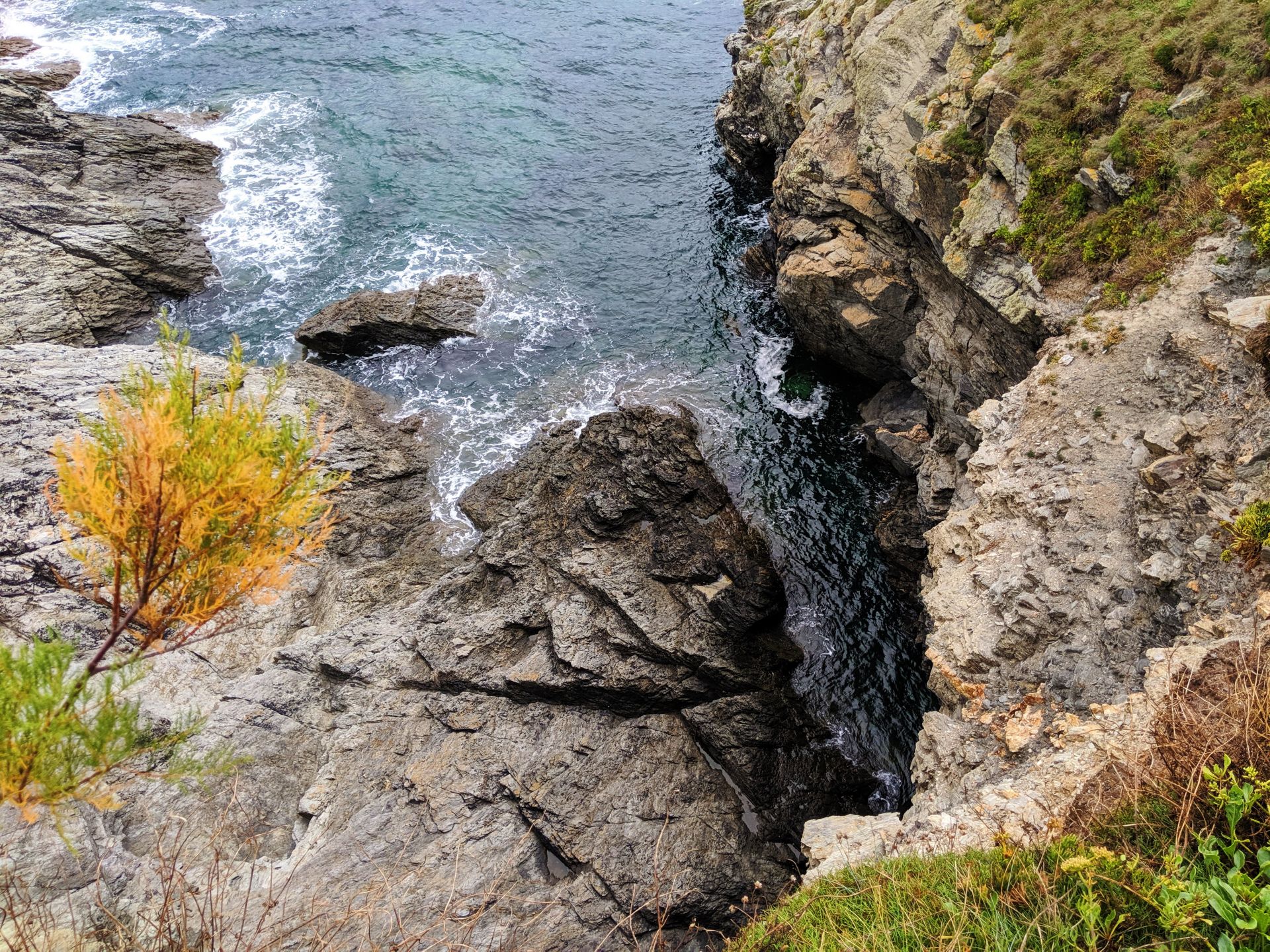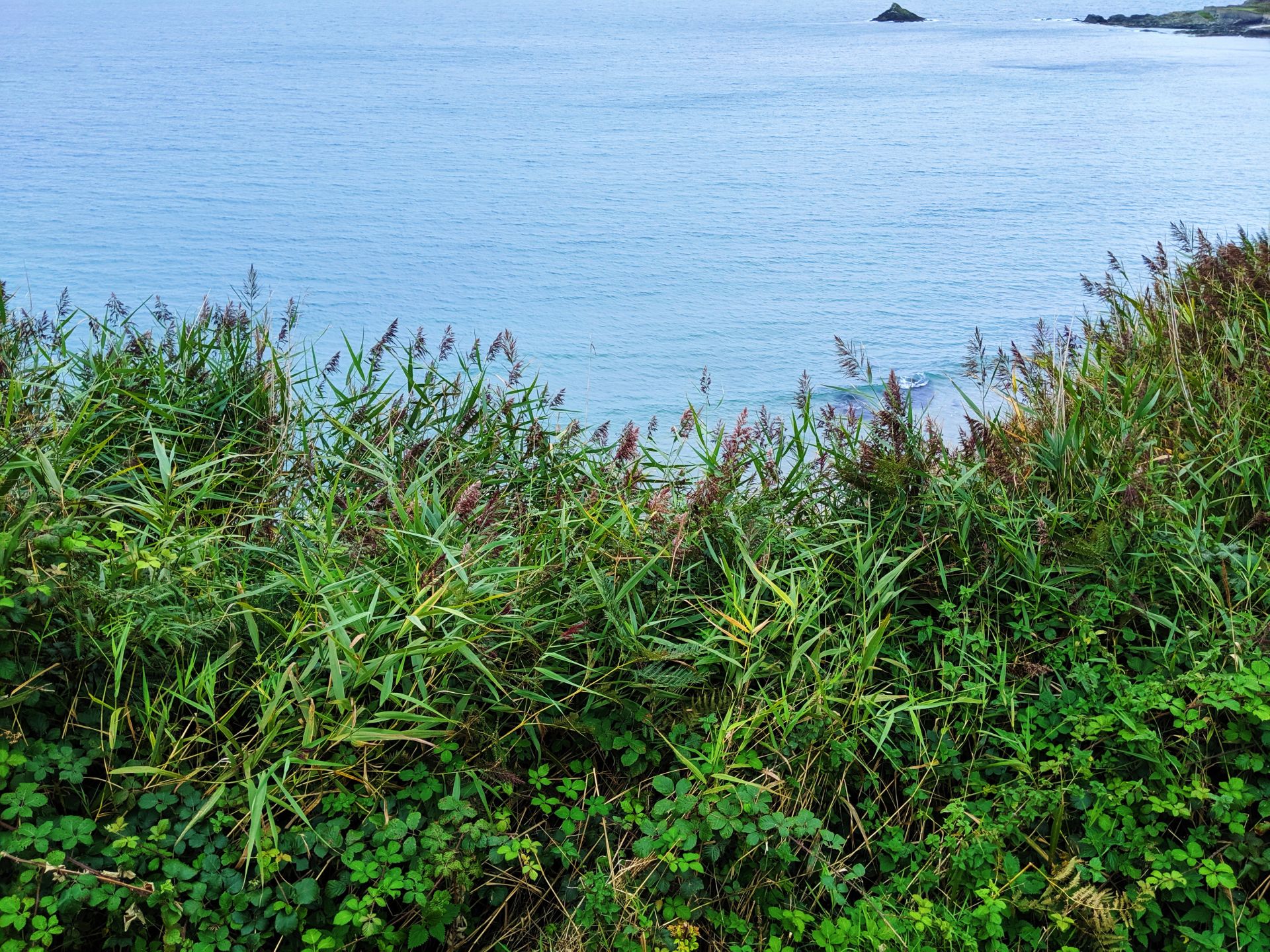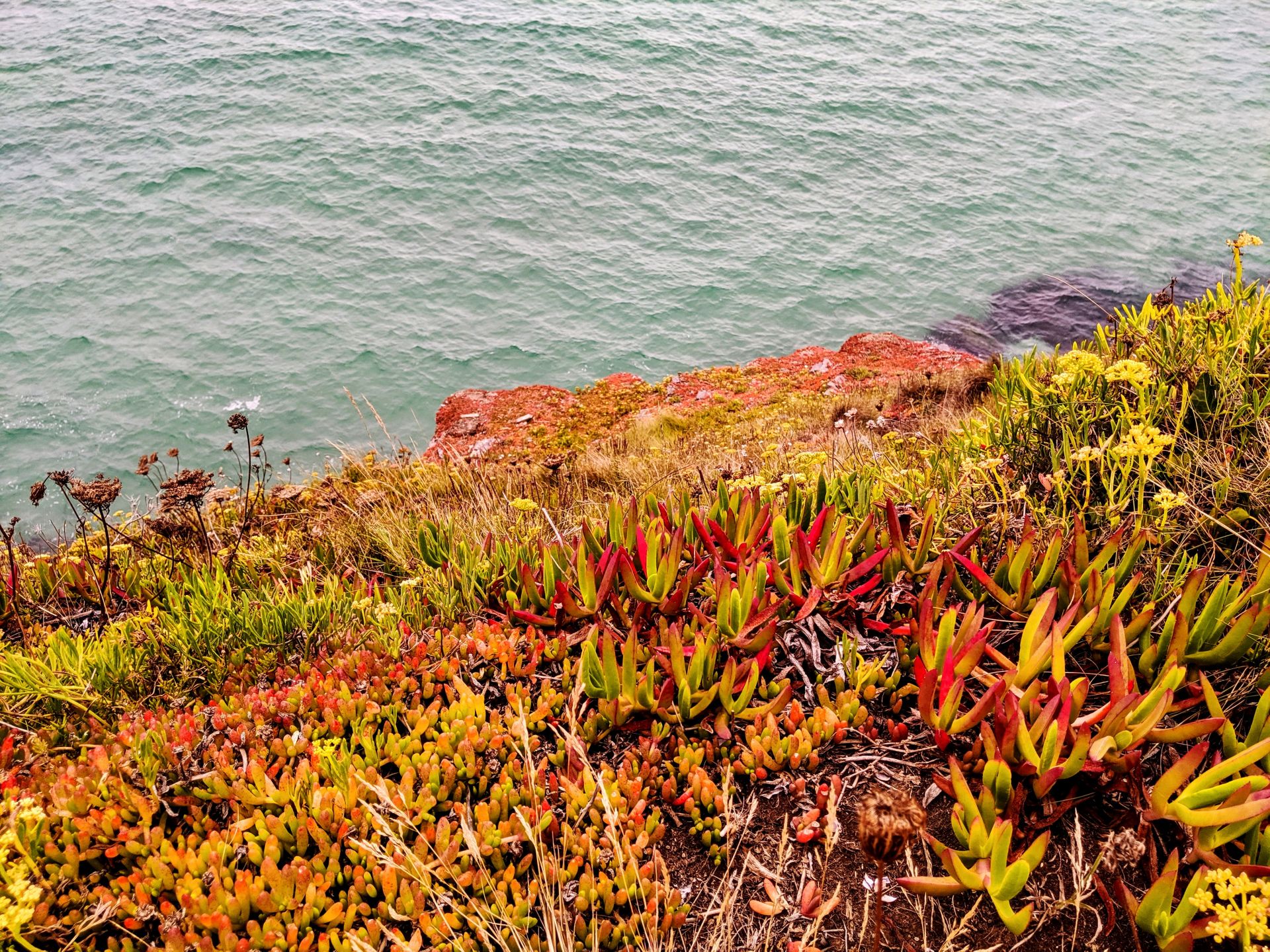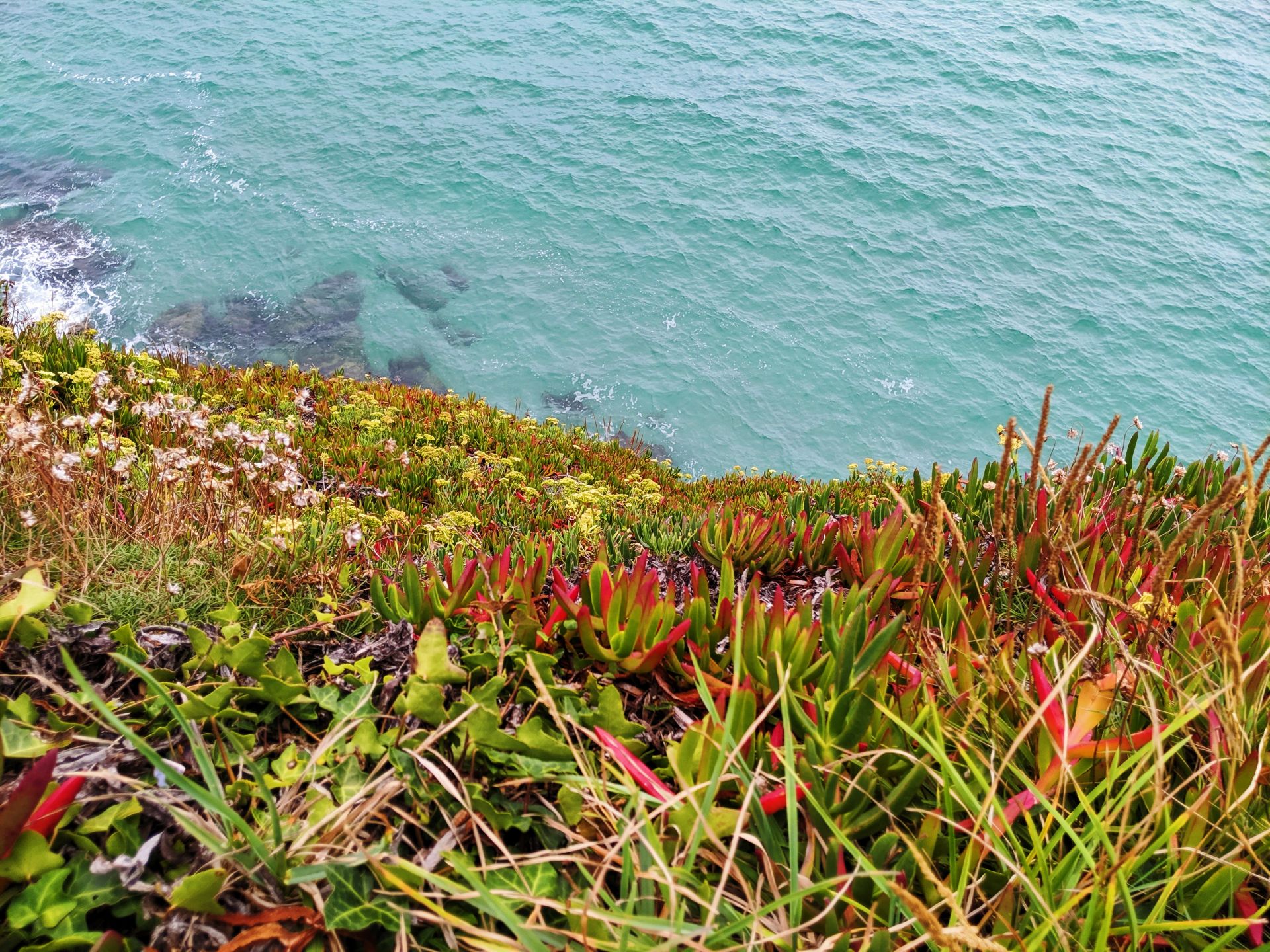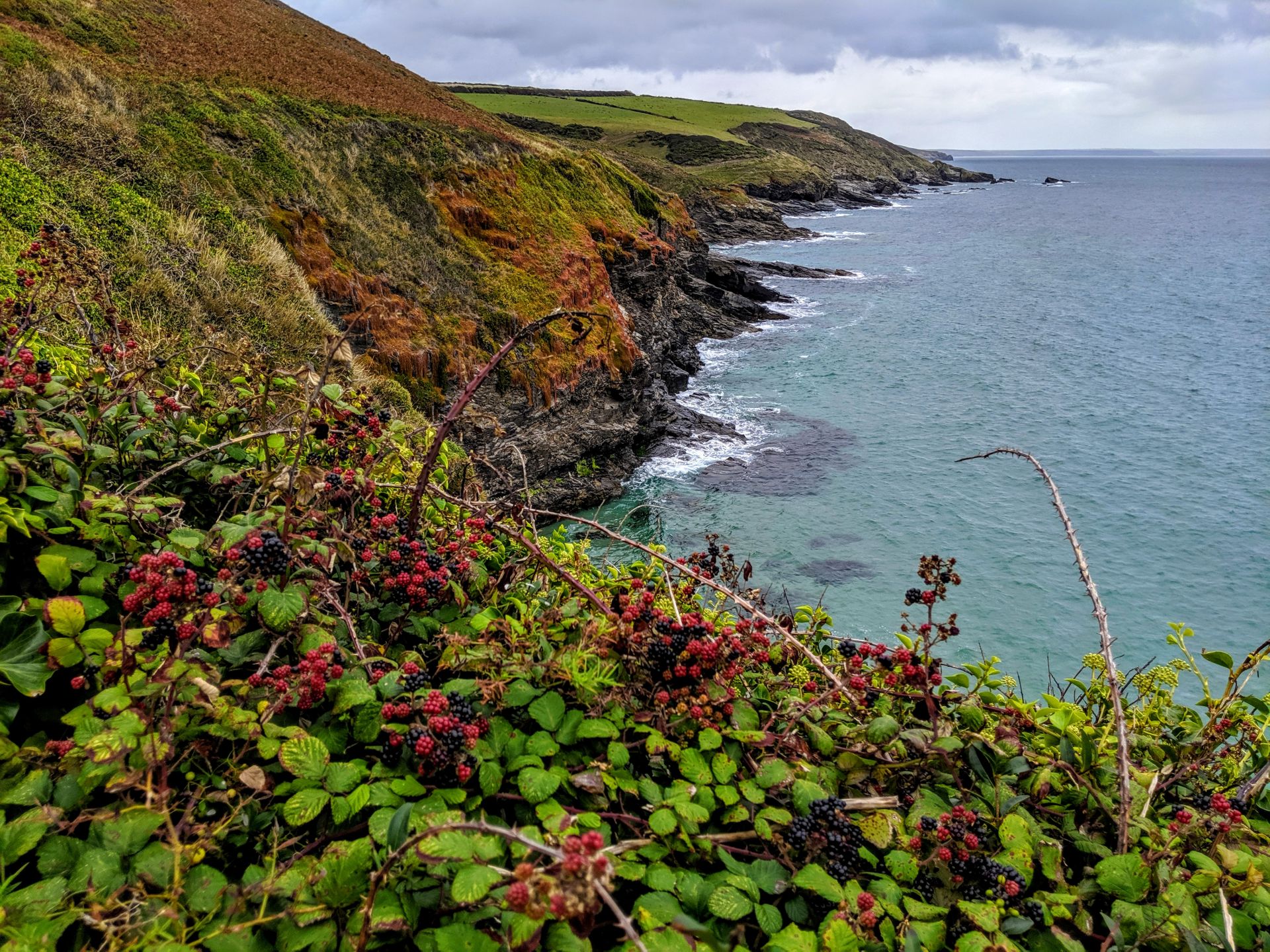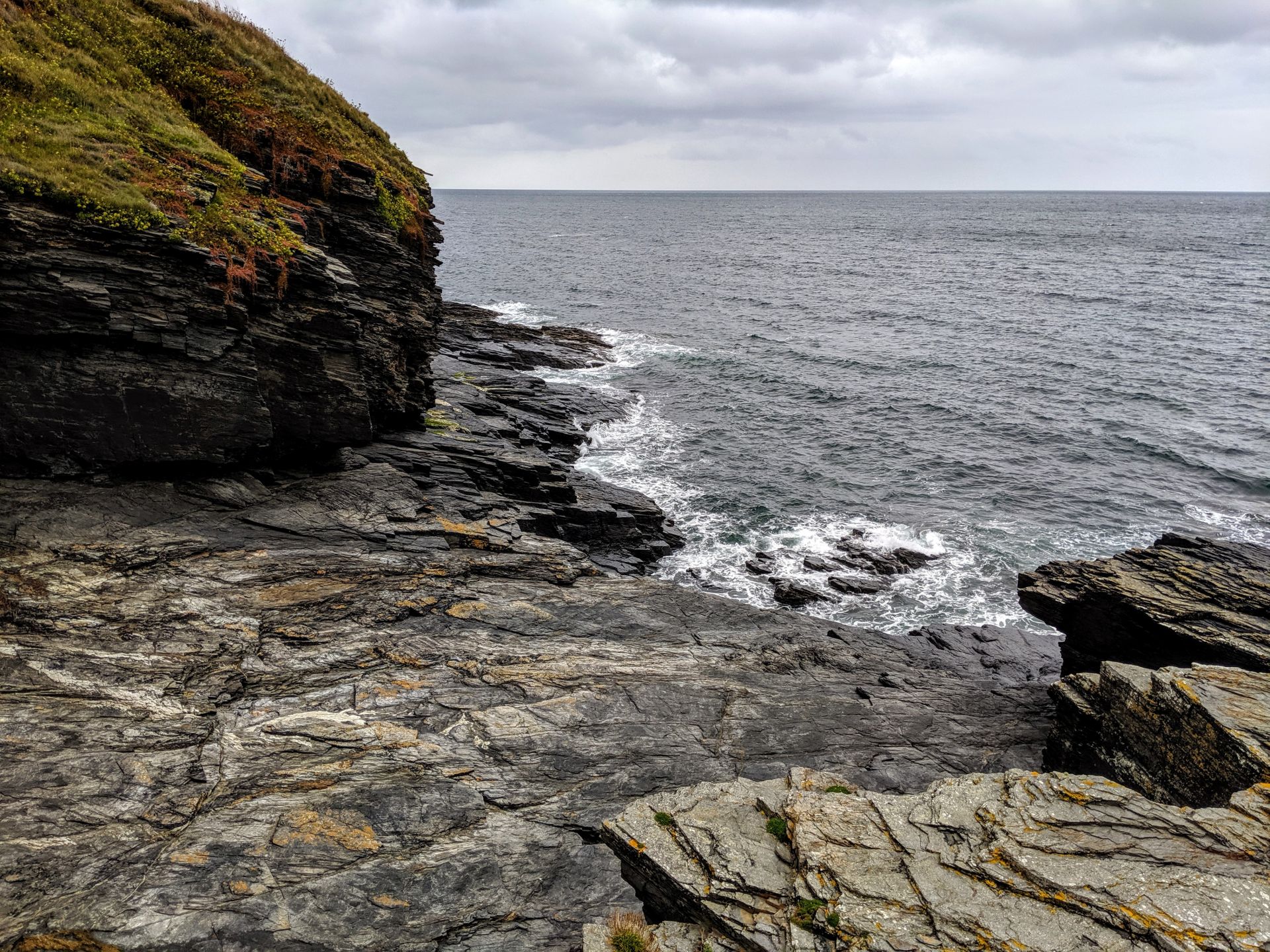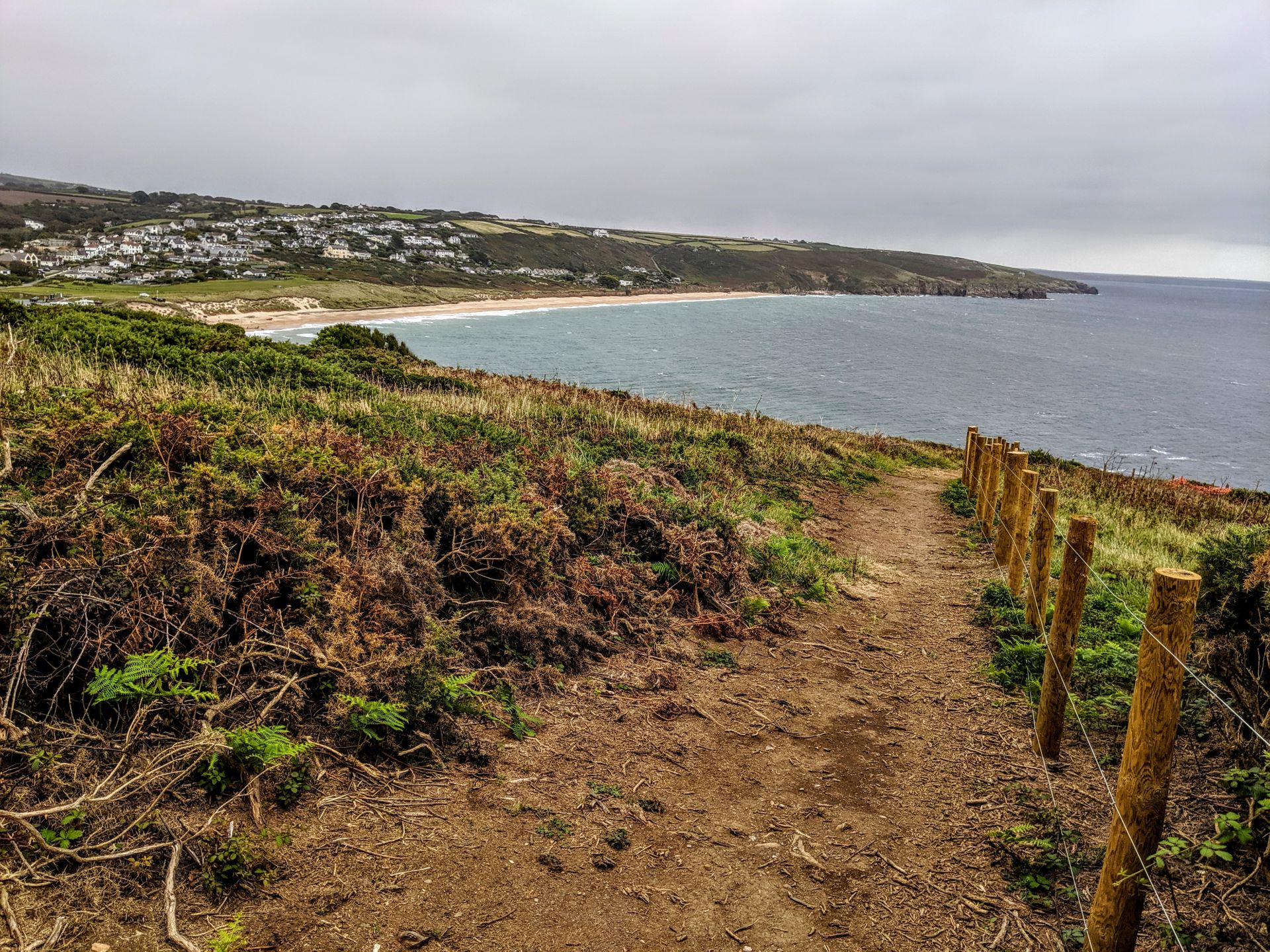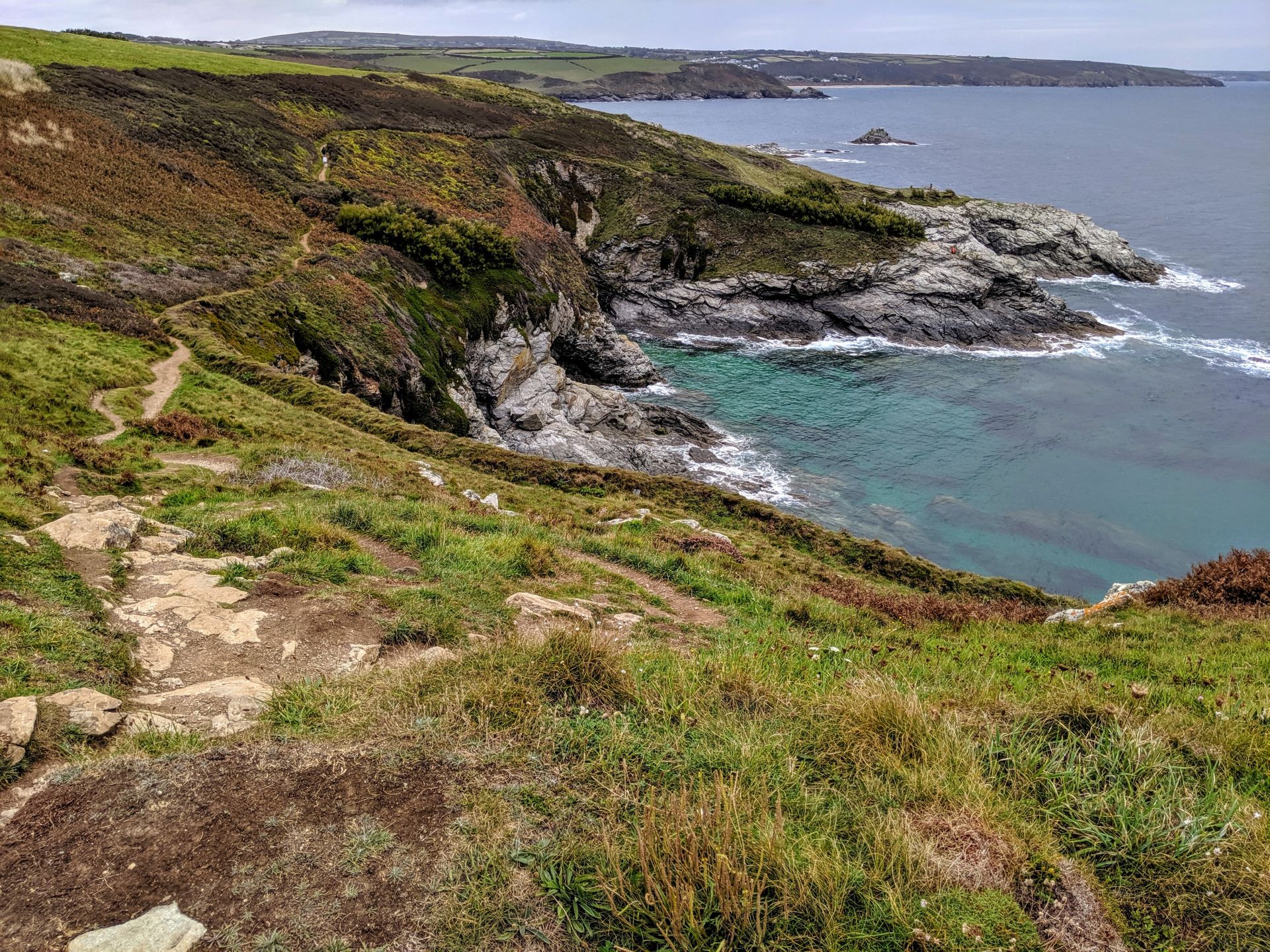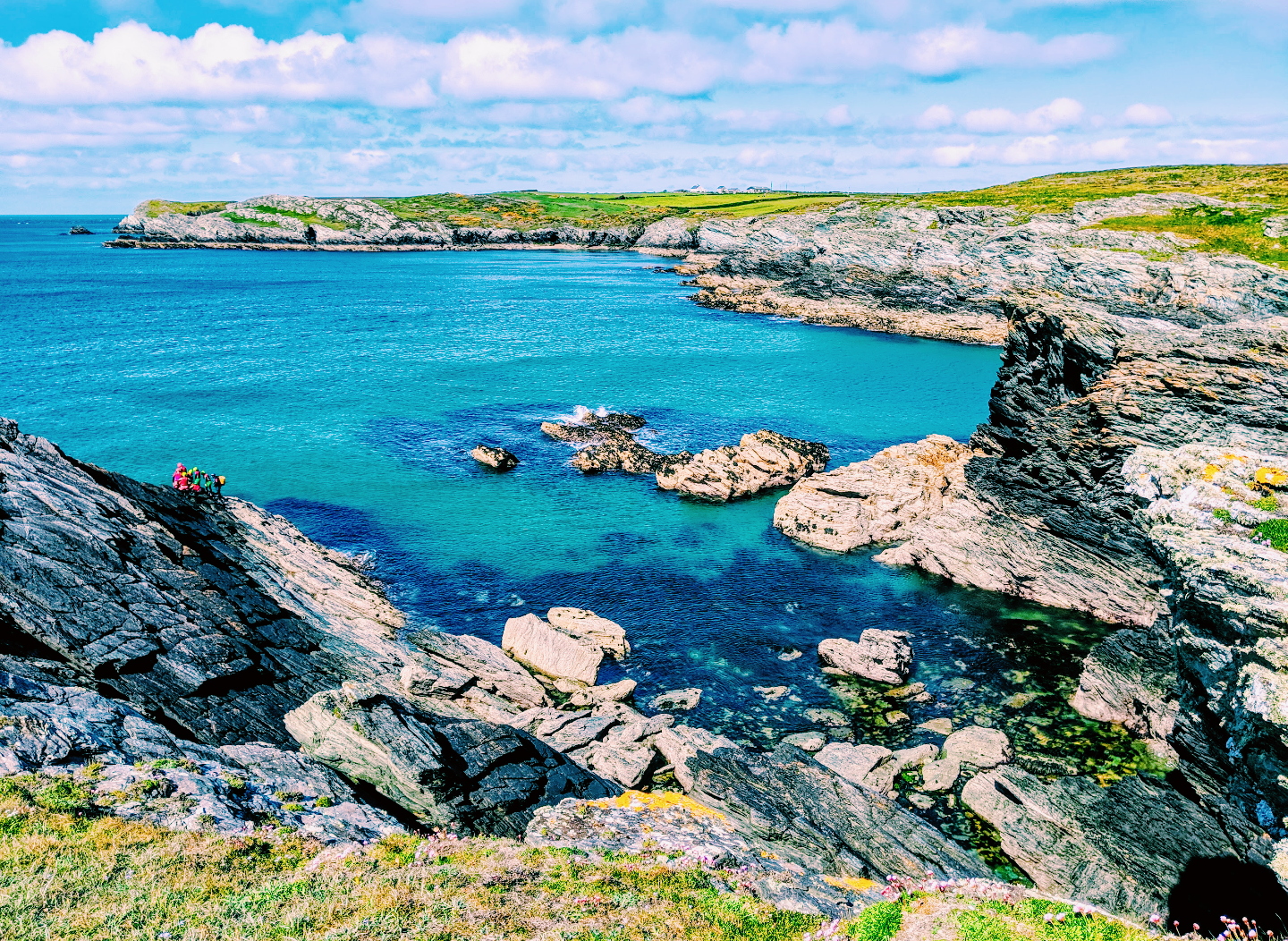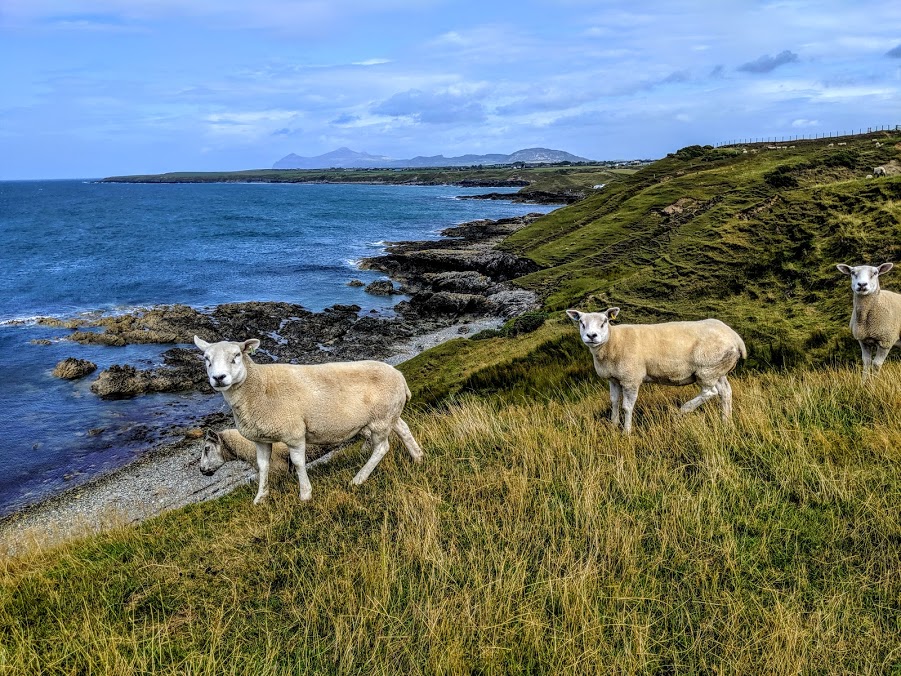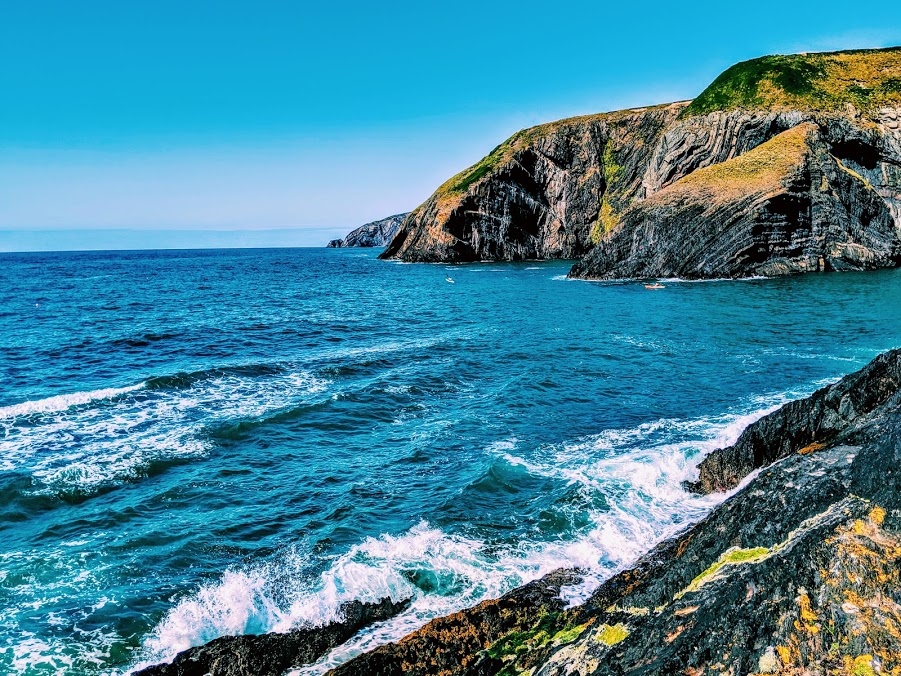“Walking takes longer… than any other known form of locomotion except crawling. Thus it stretches time and prolongs life. Life is already too short to waste on speed.” ~Edward Abbey
Day five, 10.8 miles, Challenging – Moderate to strenuous
Much of this walk through an Area of Outstanding Natural Beauty offers fantastic views of Mounts Bay and the magical island and castle of St Michael’s Mount. Fairly easy, level walking allows time to enjoy the views, until the Path begins to narrow and rollercoaster over the cliffs up to and beyond Praa Sands.

As I walked away from Marazon leaving St Micheal’s Mount in the distance, I wasn’t sure what the day would bring. Well I knew it would bring ran, after almost a week of sunshine I couldn’t complain about one bad day, right?!
Within ten minutes of my walk I came to this sign, I was completely unsure what to do. As I stood there weighing up my options, doing it anyway was the option I was thinking. A man came up from the closed road with his beautiful dog and told me I will be fine just stay away from the cliffs. Well that was all I needed, I figured if it was really bad I could turn back! And despite seeing a few signs along the way about risk to life and danger, I couldn’t actually figure out why the path was closed!
Turns out I didn’t die.
The coastal village of Perranuthnoe is situated in Mounts Bay, west Cornwall between Cudden Point and Marazion. It was predominantly a farming community, where seaweed was brought up from the beach to fertilise the land, and mackerel and pilchards were landed in the cove.
Highlights from the official Southwest Coast Path
- The ancient market town of Marazion, with its very active community of painters and potters. There has been a settlement here since 308BC and the town claims to be the oldest in Britain, and could be the settlement known to the Romans as Ictis.
- Views of St Michael’s Mount. Once a Benedictine Priory, a fortress and tin mining port, it can be accessed by a causeway at low tide or a ferry.
- The fantastic names of offshore rocks, including The Frenchman, The Bears and Little London.
- Perranuthnoe: this fairly undeveloped village, which may actually date back to Roman times, has an interesting church dedicated to St. Piran, the patron saint of Cornwall. Look out for the Norman font and Norman stone heads surrounding the doorway. After a rest on the sandy beach, you may also want to pay a visit to the Victoria Inn which is reputed to be the oldest recorded inn in Cornwall, dating back to the 12th century.
- Cudden Point: an isolated and narrow headland with sweeping views of Mounts Bay.
- The memorial to HMS Warspite on Little Cudden. The Royal Navy battleship was known as ‘the ship that refused to die’ and on her way to the breakers yard at the end of an extraordinary career, having served in both World Wars, she broke free of her tugs and ran aground at Prussia Cove.
- Prussia Cove: the headquarters of the famous smuggler John Carter and now the base for the masterclasses of the International Musician’s Seminar. John Carter was one of Cornwall’s most successful smugglers and he named himself the King of Prussia. One story tells of how he broke into the Penzance Custom House and took nothing but the goods that had been seized from his house in his absence.
Always a selfie wanker!
During my whole walk I saw “Hello You” written along the way.
Between Perranuthnoe and Prussia Cove is a rugged headland jutting out into the sea. This is Cudden Point. A truly beautiful stretch of coast which commands stunning views across Mounts Bay towards Penzance, Newlyn and Mousehole. In the 19th century it is said that children came here from miles around to search the sands below the headland. Only at spring tides was the seabed exposed enough to offer the chance of finding the treasure meant to be buried there. The children would dig through the sands, between the rocks and amongst the seaweed in the hope of finding riches beyond their wildest dreams.
But they say that beside the gold coins, jewellery and silver goblets said to have been found off Cudden Point there is one object in particular that all the treasure hunters seek. A huge table made of solid silver!
But how did all this treasure find its way to the bottom of the sea off Cudden Point? In a land full of strange legends the story of the Silver Table is an odd one.
“Many many years ago there lived in those parts a very wealthy man. He was also a very wicked one. Indeed it was said that he was no other than the Lord of Pengerswick. . . It is rather difficult to say for certain for the wicked old man being an Enchanter could go about in all kinds of disguises. So that only those that had the gift of second sight could discover him.”
Pengerswick Castle is just a couple of miles from the headland and the castle is said to be one of the most haunted places in Cornwall. The Pengerswick family seem to have had a rather dark history starting with Henry Pengerswick who was excommunicated for murdering a monk, was said to worship the devil and drove his poor wife to madness. Which Lord the legend refers to however isn’t clear.
So according to the story, one hot summer’s day this wicked and wildly wealthy man invited a party of his equally wicked and thoughtless friends to sail with him on his elegant ship around Mounts Bay. As the afternoon lengthened they dropped anchor near Cudden Point. And as they feasted on all kinds of delights, drank and made merry, the boat lolled lazily on the tide. Suddenly, and for no discernible reason, the boat sank into the calm and transparent waters. Sucked down into the depths, the lord and his guests and all the opulent treasures that they had on board disappeared.
For a long time after the strange event local fishermen would tell of strange sounds coming from beneath the sea at Cudden Point. The sound of laughter and the clinking of glasses coming up from the watery depths. And some have even said that when the sea was calm enough they could see the unfortunate guests still seated around that silver table on the seabed, continuing their party, amongst the fishes.

Prussia Cove consists of a smattering of houses above a small, sheltered inlet located a few miles west of Praa Sands. Signposted from the main Penzance to Helston road, the cove can be accessed via a footpath that leads from a car park at the end of a narrow lane.
The name harks back to the days of wrecking and smuggling when Prussia Cove was one of the foremost locations for landing and storing contraband. The head of operations was the notorious John Carter (born in 1738) who was given the nickname ‘King of Prussia’ after a childhood game he played with his brothers, Harry and Charles, in which he pretended to be Frederick the Great, the real King of Prussia. Numerous clashes took place between the Carter brothers, who stationed a battery of guns on the cliffs above the cove, and the Customs men, many of which are documented in a colourful autobiography written by Henry Carter after he reformed and became a preacher.
